
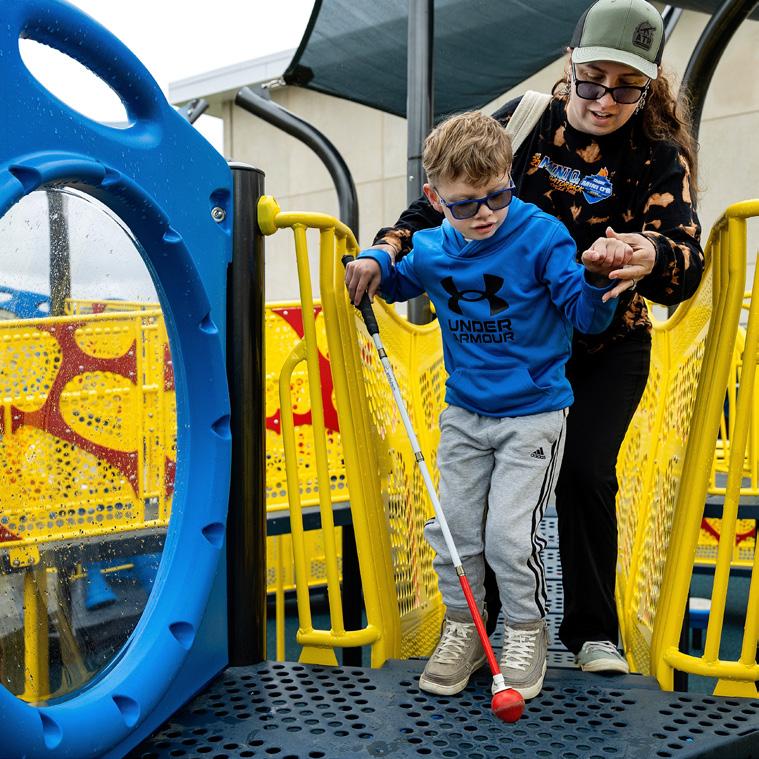
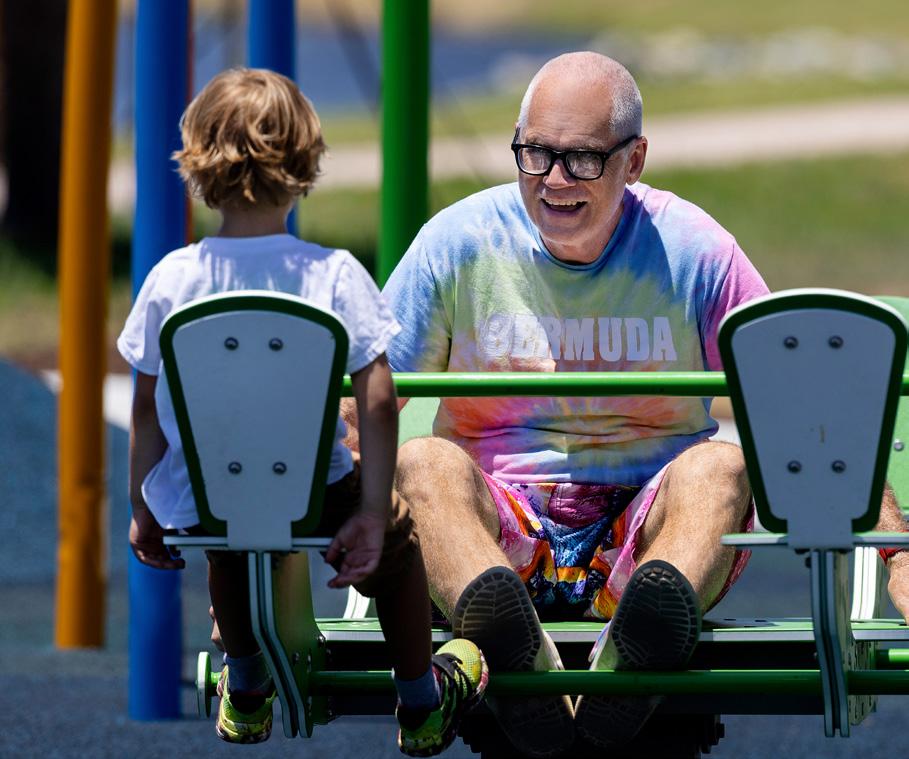




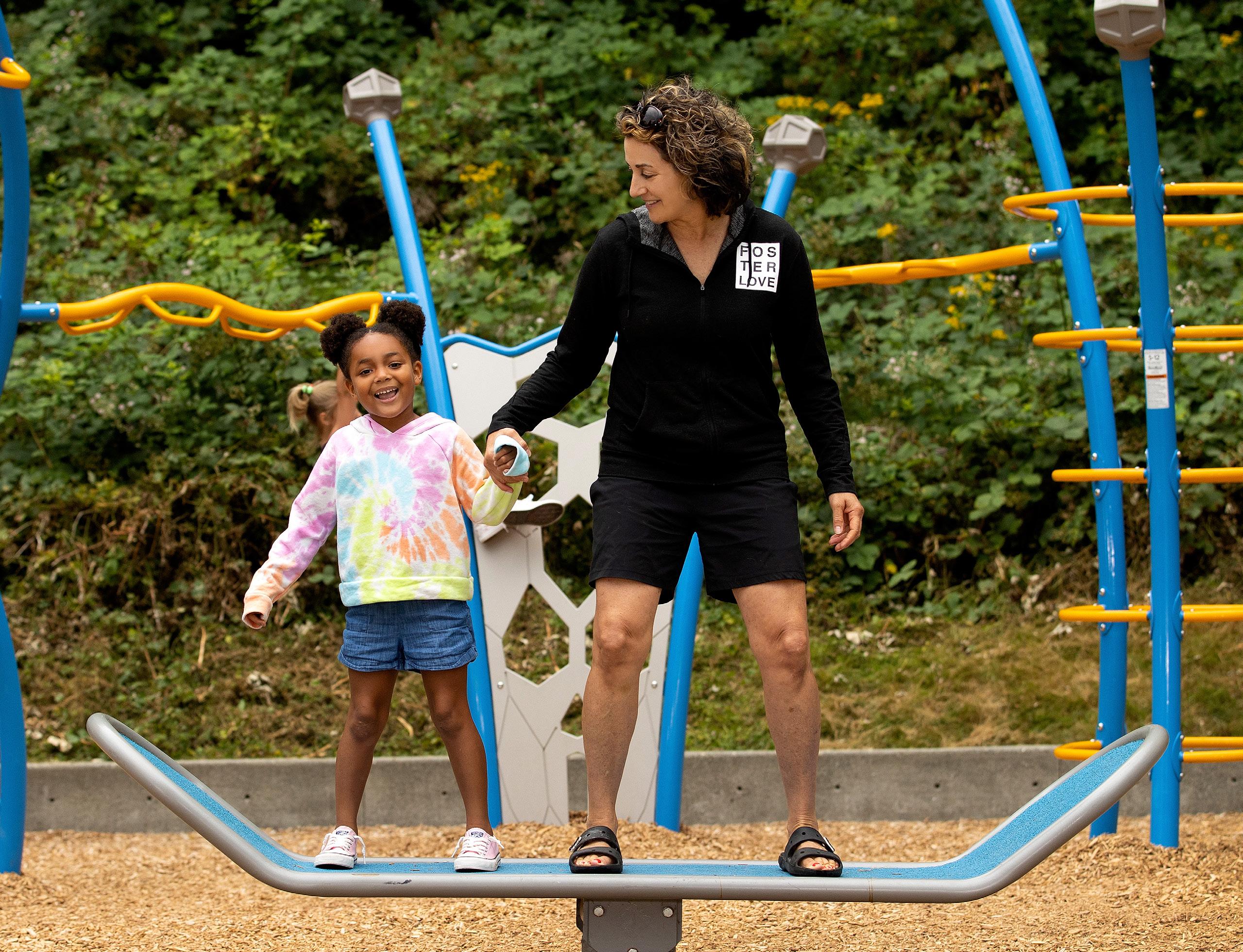
Our goal is to partner with you to create spaces that address specific needs, encourage intergenerational connections, and foster a stronger sense of belonging for every person. In this book, we explore six key trends in designing intergenerational recreation spaces.
These topics come up repeatedly in our conversations with parks directors, city planners, landscape architects, and teachers. They are the drivers behind our research and innovation and the key to building stronger, healthier communities everywhere where everybody belongs.

Humans are hard-wired for play, and our bodies are designed to play for our entire lives. Play and recreation are as essential to our health as food, water, and sleep. Play strengthens our bodies, regulates our moods and emotions, and enhances our cognitive abilities, promoting advanced problem-solving. It’s amazing how vital play is in our lives.
One of the trends we’ve been following is the need for intergenerational play and recreation. According to the National Council on Aging, intergenerational recreation refers to activities and shared experiences that bring together people of different ages, typically within a family or community setting, for the purpose of fun or fulfillment Many parks and outdoor spaces include areas for people of various ages and abilities. Still, they are typically separated by age range: children on a playground, adults walking on trails, etc. By bringing everyone together into a single space, we can encourage these intentional interactions between people of all ages.
Another reason for the increased interest in this area is alarming. Adults have forgotten how to play. A UK study found that 1 in 5 parents don’t know how to play with their children, and 75% of children want to spend more time with parents and grandparents outdoors1. Creating spaces where children and adult caregivers can connect is more important than ever. Our goal is to enrich childhood through play and ensure everyone can play for life.
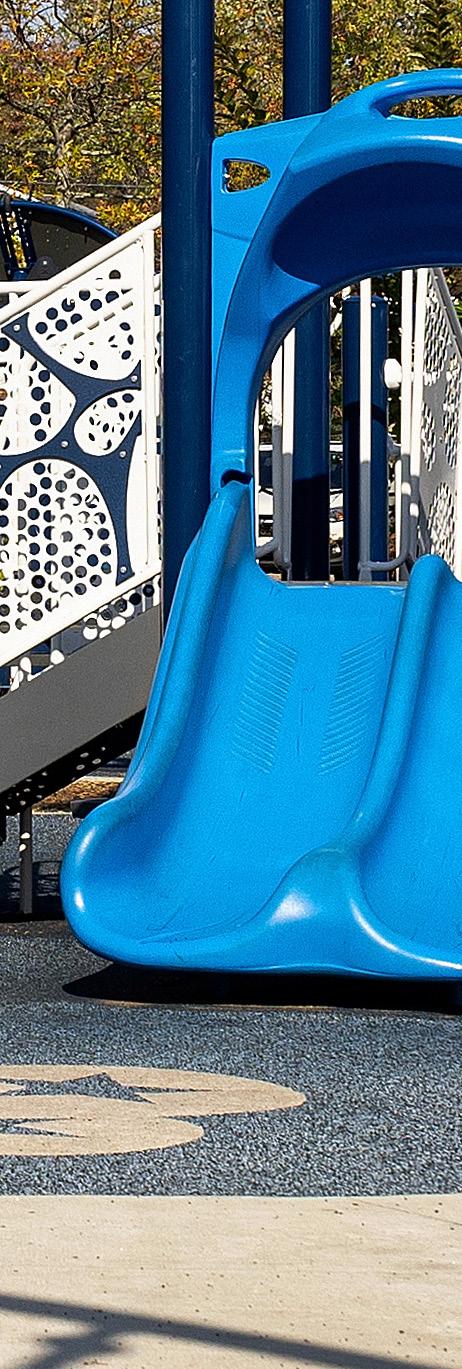
Community leaders, designers, parents, and educators are seeking ways to bridge the divide between generations because the research is clear. When people of different generations interact, particularly through play and recreation, something magic happens. Emotional, cognitive, and physical benefits are realized through these connections that don’t occur in same-generation interactions.
Researchers Doris Fromberg and Doris Bergen found that children who play with adult caregivers show greater creativity and higher language and problemsolving skills. These children engage in more sophisticated types of play and realize greater cognitive and social-emotional development. Likewise, adults who interact with children during play realize dramatic psychological and health benefits such as reduced stress, improved mood, greater cognitive skills and enhanced relationships2
1 in 5 parents don’t know how to play with their children1
55% of children desire more play time with their parents and grandparents1
75% of children want to spend more time with parents and grandparents outdoors1
80% of the population utilize public parks on a regular basis - the largest groups - under 12 and over 553
35 years ago, the Americans with Disabilities Act (ADA) was signed into law, marking a pivotal moment in American history. For the first time ever, the law required that every public space be accessible to everyone, ensuring that all could enjoy these spaces equally.
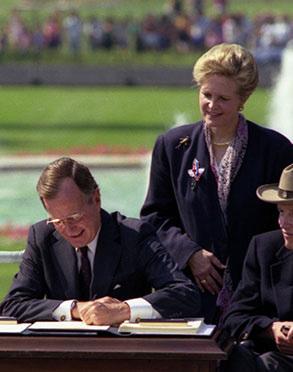
A common misconception is that only a small portion of the population lives with a disability. In reality, 1.4 billion people worldwide live with a disability1 – that’s equal to the entire population of India!
We believe in creating outdoor spaces that go beyond accessibility, transforming them into truly inclusive environments that encourage intergenerational connections and welcome everyone, regardless of ability.
As children grow and begin to explore the world around them, they start to form an understanding of their place in it. An inclusive play environment nurtures this discovery, showing every child that they are valued, respected, and free to participate in their own unique way.
The need for inclusivity doesn’t stop with children –it includes all ages. In the U.S. alone, 82% of adultsmore than 276 million people - visited a local park or recreation facility in the past year, with spending time with loved ones being the top reason for those visits1 Inclusive parks provide a space where all ages and abilities can come together, fostering intergenerational connections and creating lasting memories.

We believe in equity and inclusion, and we invest in research, programs, and continuing education to help communities advocate for innovative spaces."

Bill Botten, U.S. Access Board (retired), who played a key role in developing the new combined guidelines for the Americans with Disabilities Act and the Architectural Barriers Act, emphasizes the importance of intergenerational and inclusive play:
“Intergenerational and inclusive play and recreational facilities bring families, neighbors, and community members together regardless of age or ability that builds meaningful relationships, a greater understanding of those that maybe different from you, it provides opportunity to learn new skills and challenge oneself physically and mentally.”
An investment in inclusion cultivates a sense of belonging, embodying what it means to truly live in community with one another. These outdoor spaces celebrate diversity, foster meaningful connections, and ensure that everyone, regardless of age or ability, can exist just as they are.
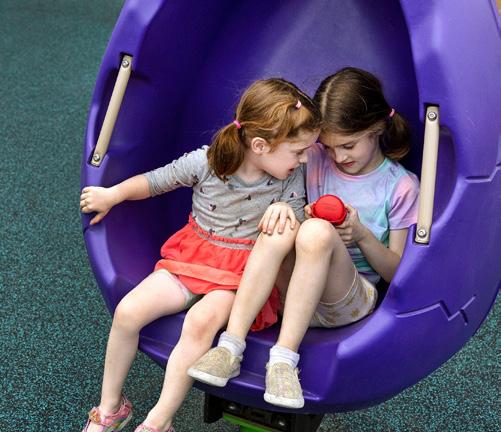
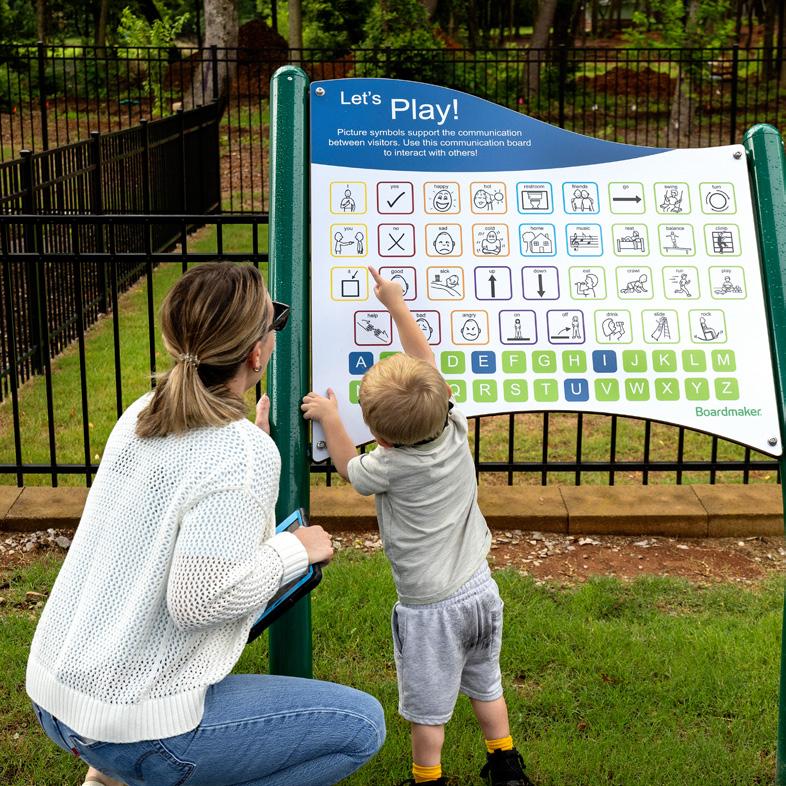
While major innovations often make headlines, it's the small, thoughtful details that truly shape an inclusive play environment. For children seeking sensory relief, we design cozy, quiet spaces where they can break between play sessions, empowering them to self-advocate and return to play when they’re ready. We also design panels and other tactile activities
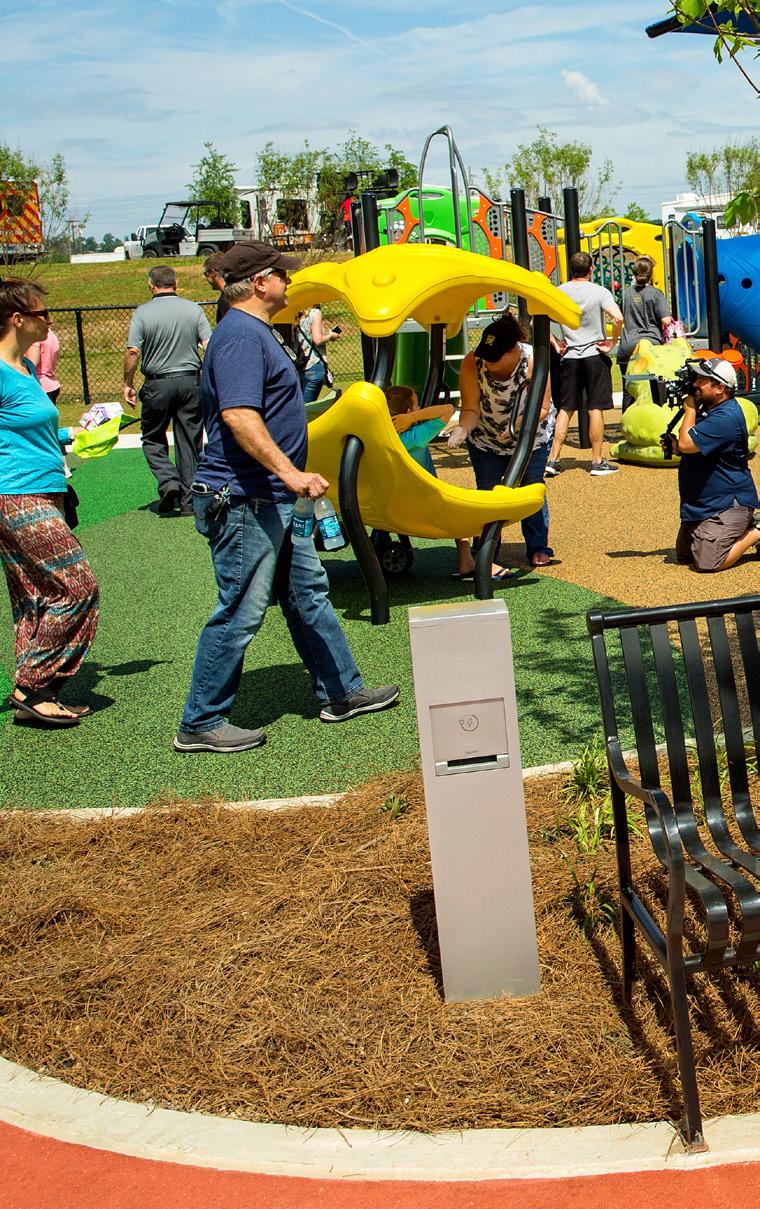

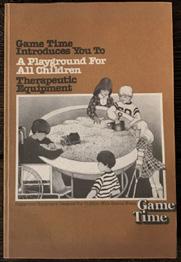
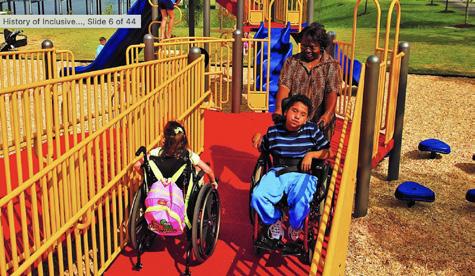
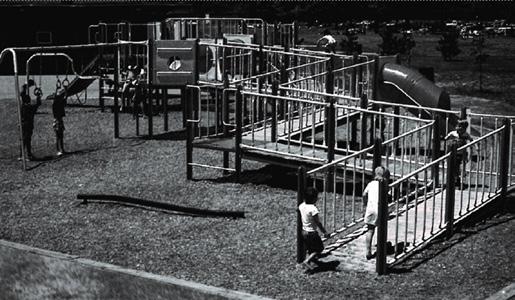
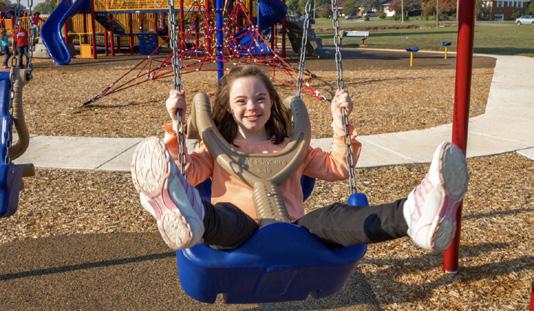
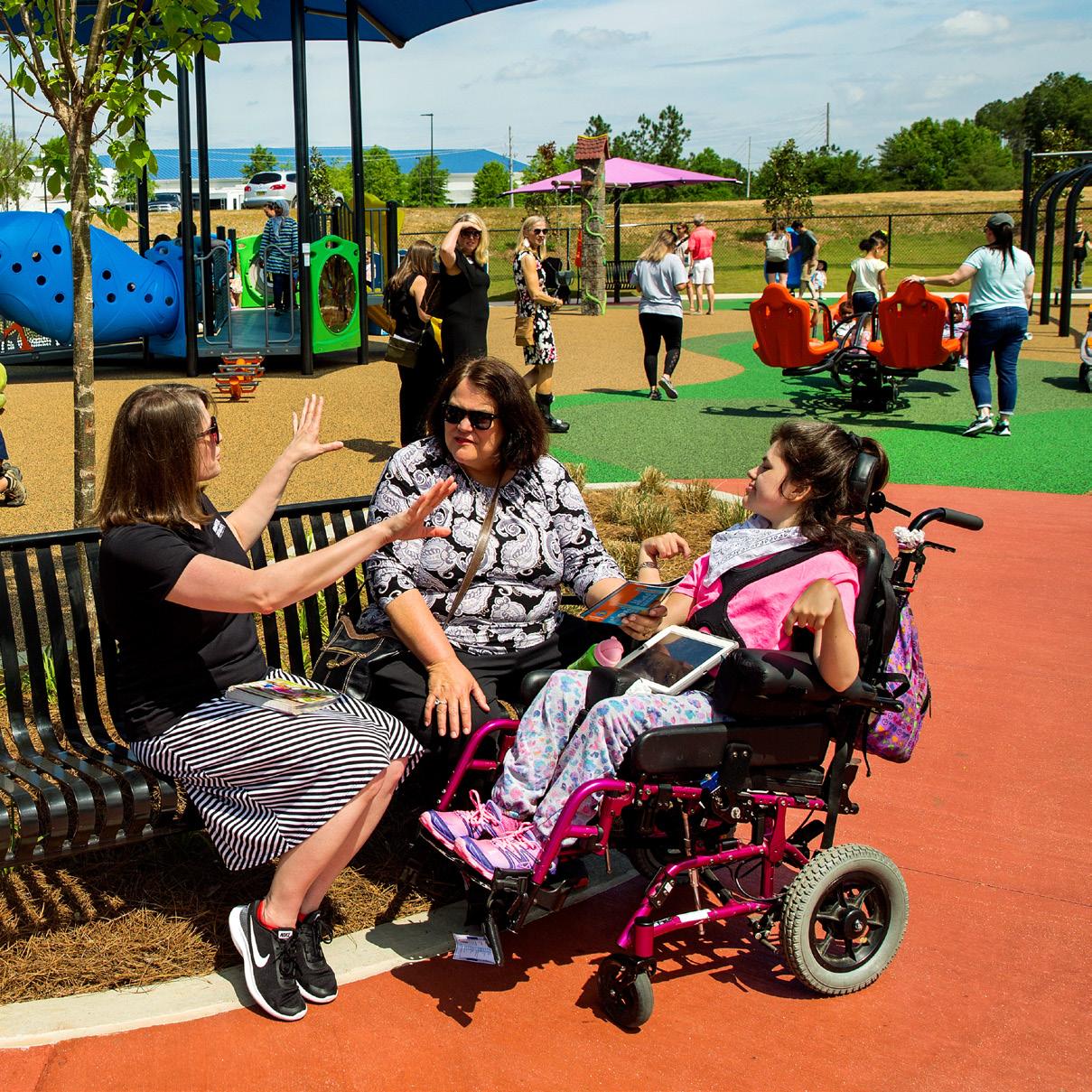
to be placed within comfortable reach for children using mobility devices, ensuring everyone can join in the fun.
Inclusion isn’t a destination - it’s a journey. As research continues to evolve, we’re excited to explore new ways to foster play for all ages and abilities.
The Explore Playground and Splashpad at the Hoover Met Complex in Hoover, Alabama stands as a hallmark for modern inclusive design. The entire play system is ramp-accessible and features large PowerScape decks, providing plenty of space for children using mobility devices to move and play comfortably. Sensory panels are placed at accessible heights so everyone can engage in the fun. Nearby, the Communication Panel, developed in collaboration with Boardmaker, helps users express themselves, identify play activities, or share how they're feeling with peers, fostering meaningful interaction and connection.
Inclusion has always been at the heart of everything we do at GameTime. Since pioneering the inclusive play movement in 1977, our mission has remained the same: to create outdoor spaces where people of all ages and abilities can come together through play. In 1989, GameTime introduced the first commercially available ramped play structure, and we’ve continued to lead the way in inclusive innovation ever since.

2010
PlayCore Introduces 7 Principles of Inclusive Playground Design
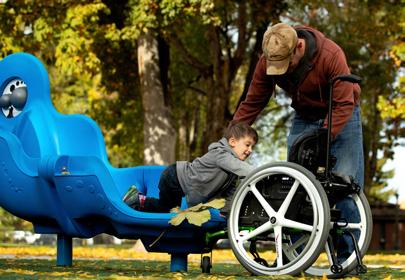
2015
Debuted the First Inclusive Sensory Playground Climber
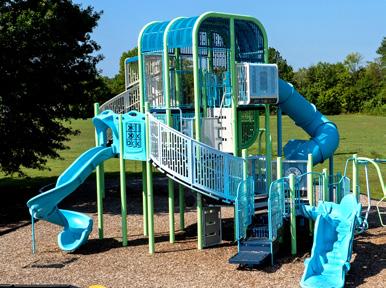
2024
Aventus Tower is the First Accessible Playground Tower
2011
Designed the First UniversallyAccessible Custom Playground
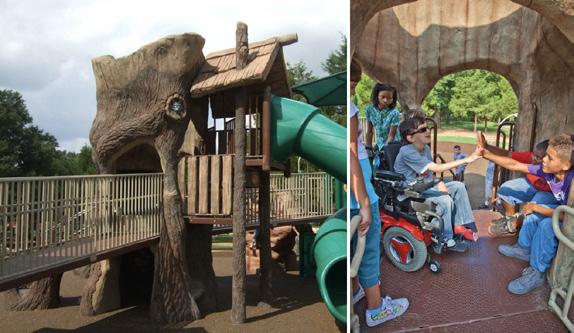
2021
GT Wave is Industry's First Inclusive Playground Net
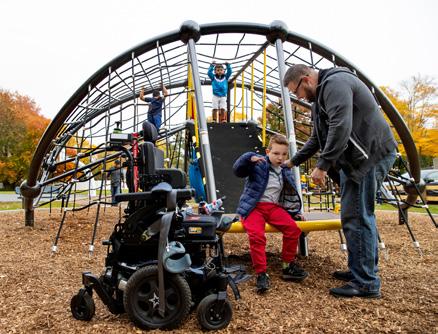
Inclusive innovations are only possible through collaboration. We rely on our partners in inclusive play to help us drive meaningful innovation, creating more opportunities for play for everyone across the country.
Eccles Jones College of Education & Human Services Institute for Disability Research, Policy & Practice
Developed the 7 Principles of Inclusive Playground Design® in collaboration with PlayCore and continues to lead ongoing research in disability awareness and inclusion.
A passionate advocate for inclusive recreation, Damian Buchman is on a mission to transform every park in America, starting in his hometown of Milwaukee, Wisconsin. Partnering with Damian, we are focused on making whole parks universally accessible.
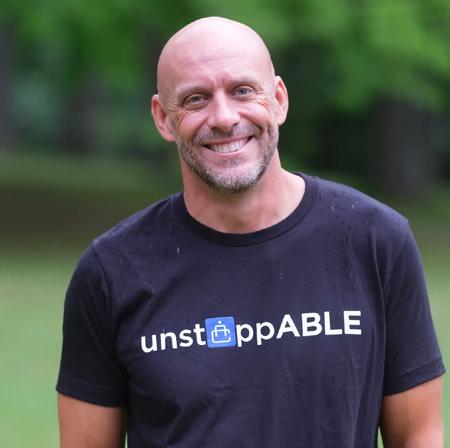
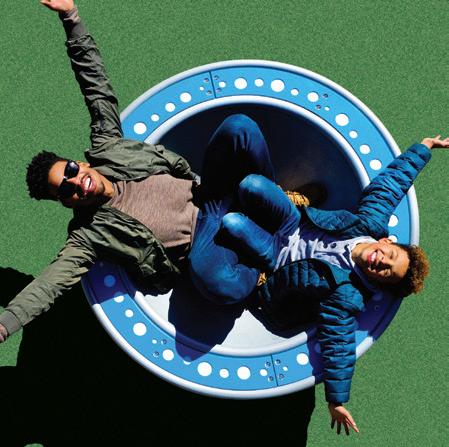
GameTime is the exclusive North American distributor of these innovative, inclusive, and fun products that are transforming the landscape of parks and playgrounds. Products like the Inclusive Whirl, Aurora Spinner, and others make it easy to add inclusive and intergenerational play anywhere.
As we continue to build new connections and hear more stories, our understanding of inclusion deepens, fueling our passion to design meaningful experiences that unite all ages and abilities.
Creating inclusive environments goes beyond playground equipment - it’s about designing every aspect of the space with intention. From accessible restrooms with adult changing stations to power chair charging ports, thoughtful features ensure the entire experience is responsive to your community’s unique needs and fosters intergenerational connections.
Inclusion means more than adaptive equipment or universal design - it’s about creating spaces where everyone, of every age and ability, feels welcome. We can help you design experiences that invite the whole community, from kids eager to explore to adults looking to stay active and connect with their families.
Through intentional design strategies and inclusive equipment that’s fun for the whole family, you can create playful spaces that foster meaningful connections across generations.
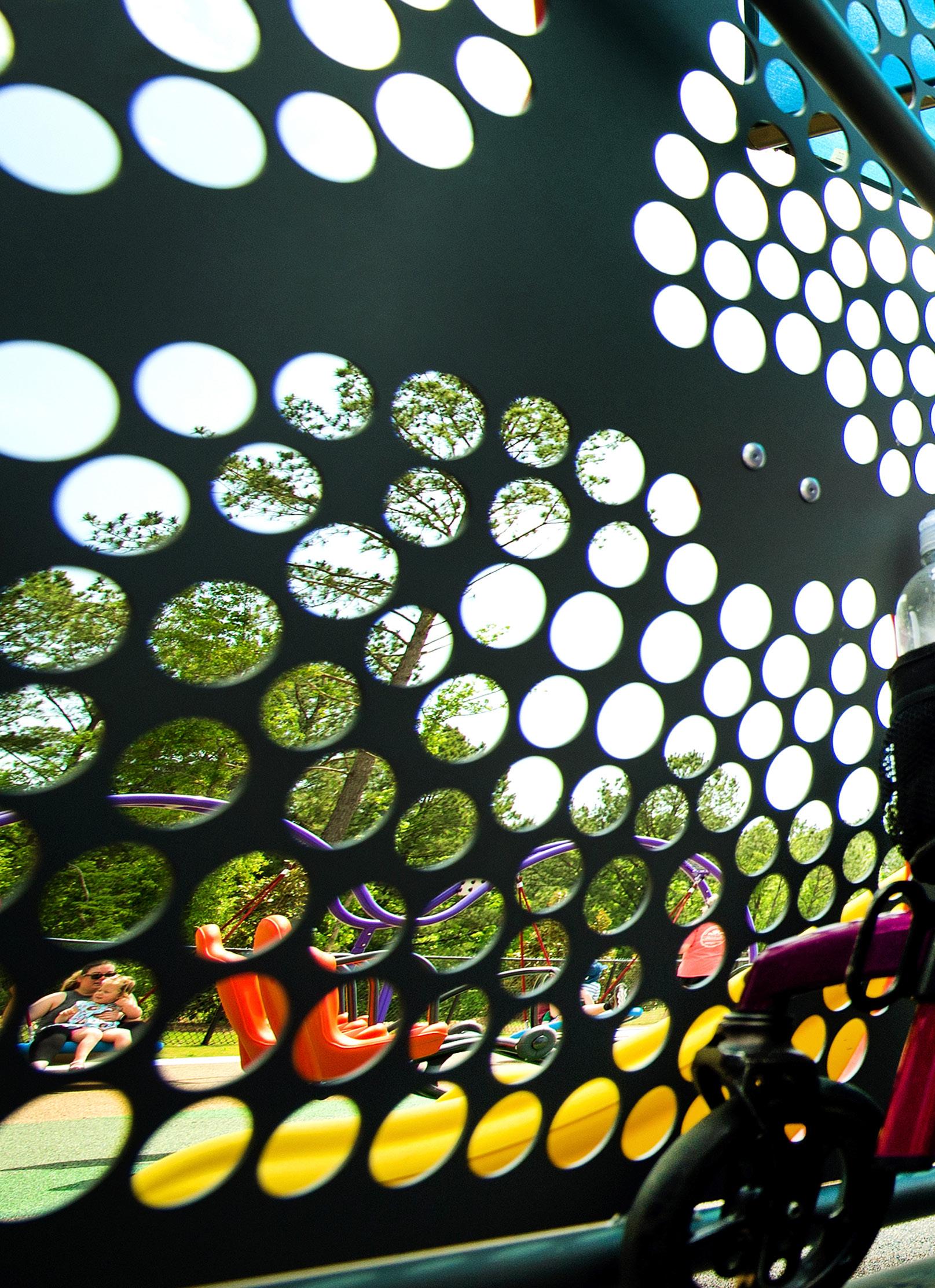
We build inclusive playgrounds, and they’re great - they’re important, but every one of those playgrounds is in a park, and everybody deserves the opportunity to explore the entire park, not just the playground. That’s what a universally inclusive park is all about.”
DAMIAN BACHMAN Founder of The Ability Center
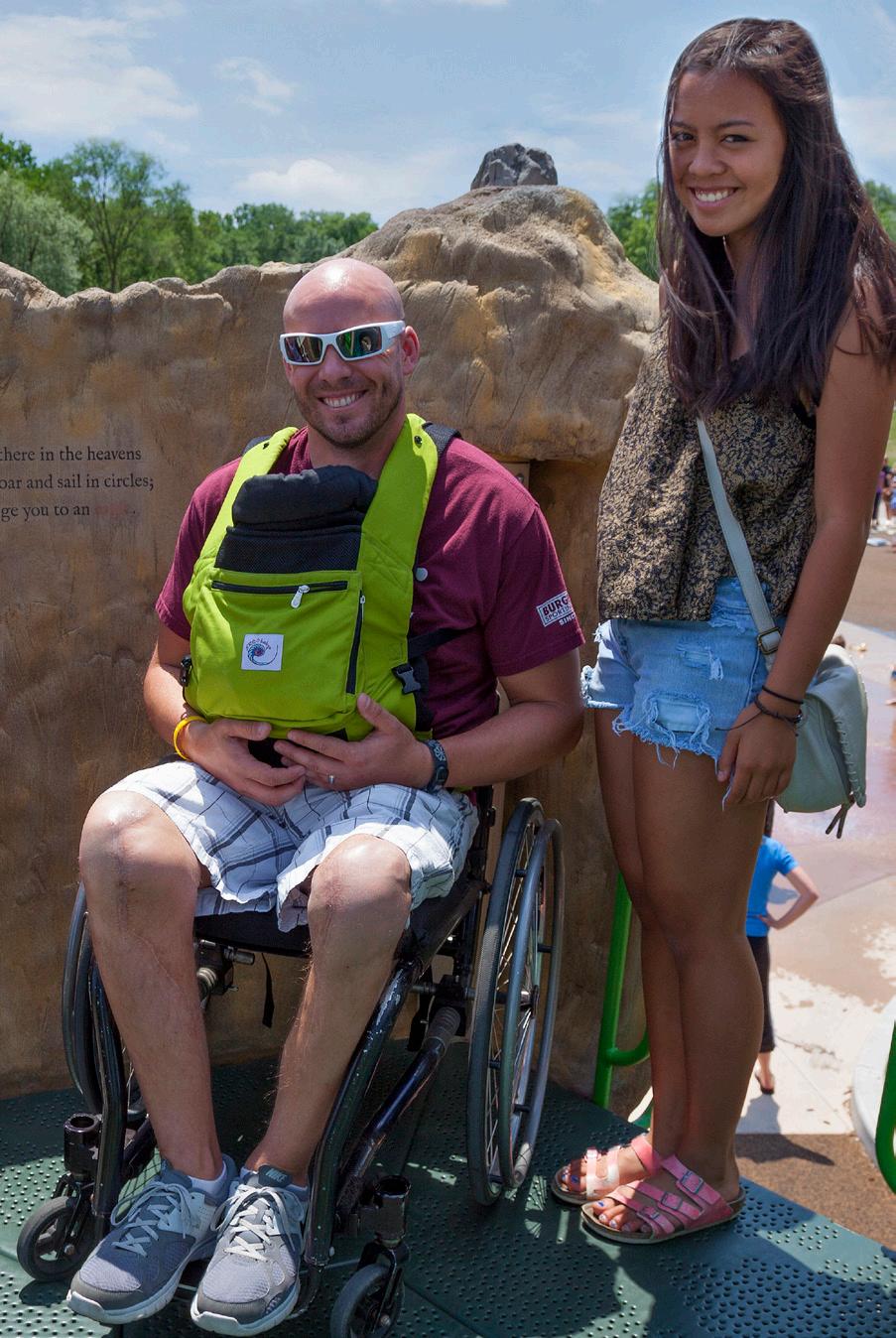
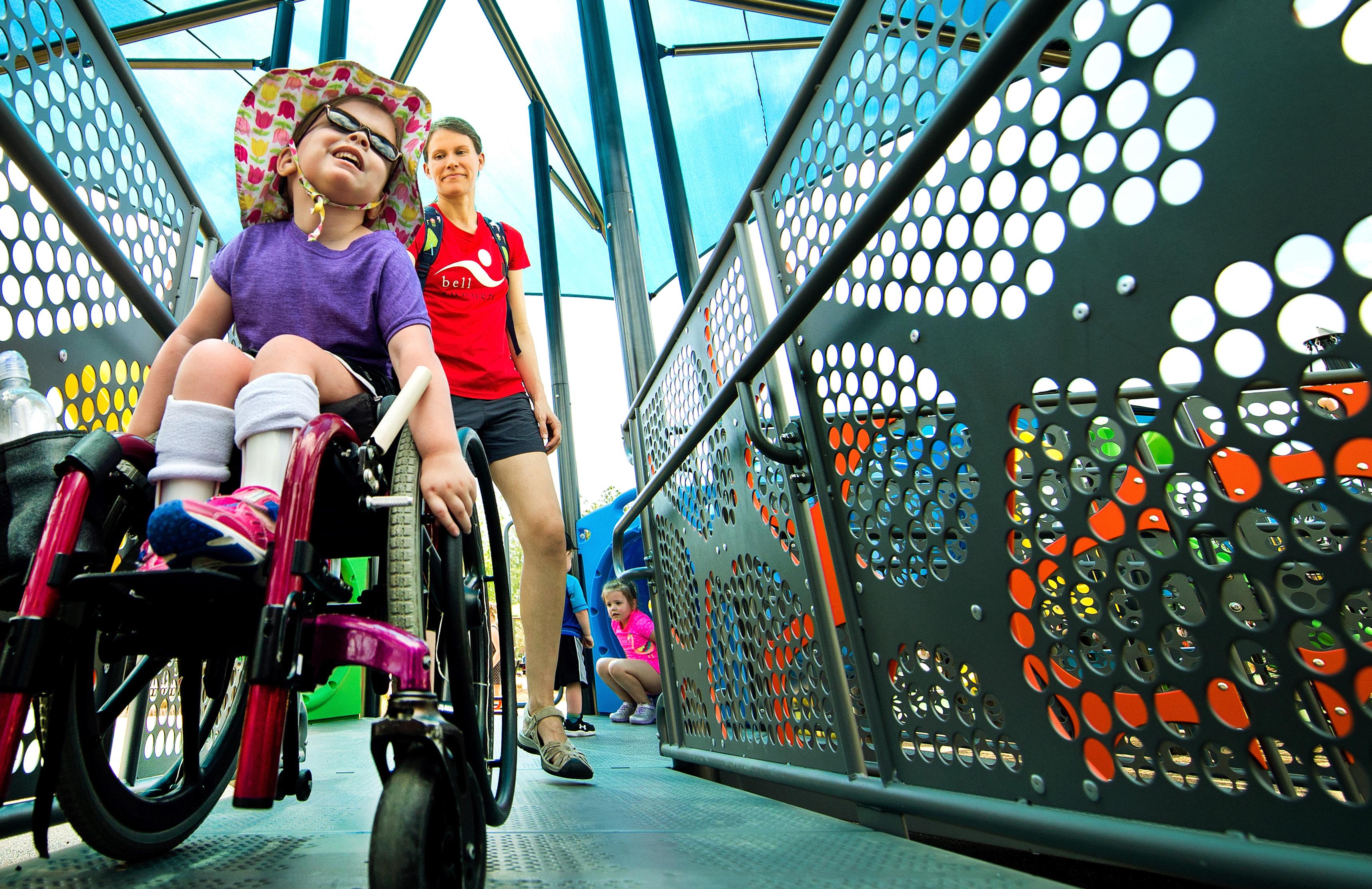
1.4 BN people in the world have a disability. Most of them are adults.3
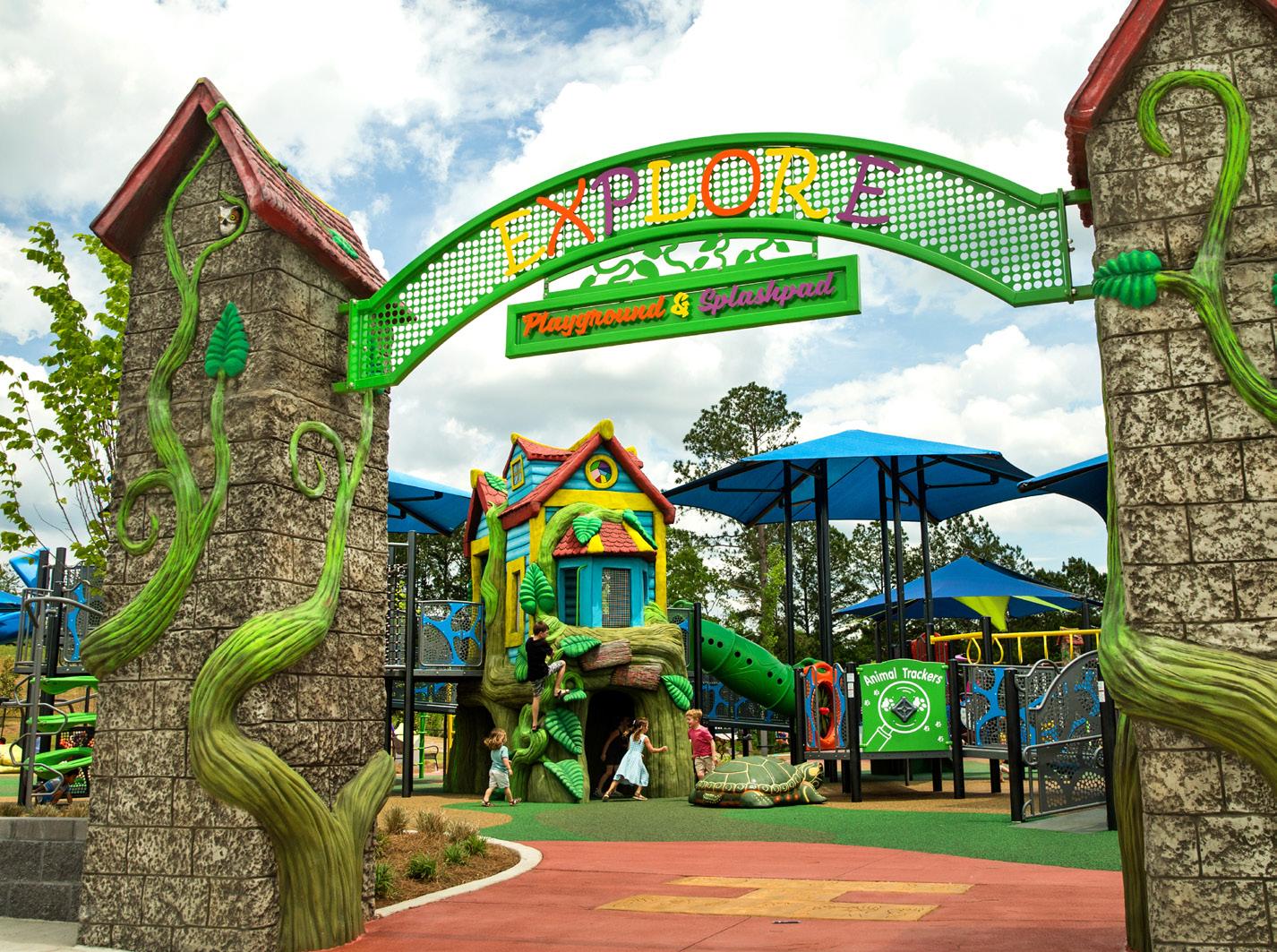
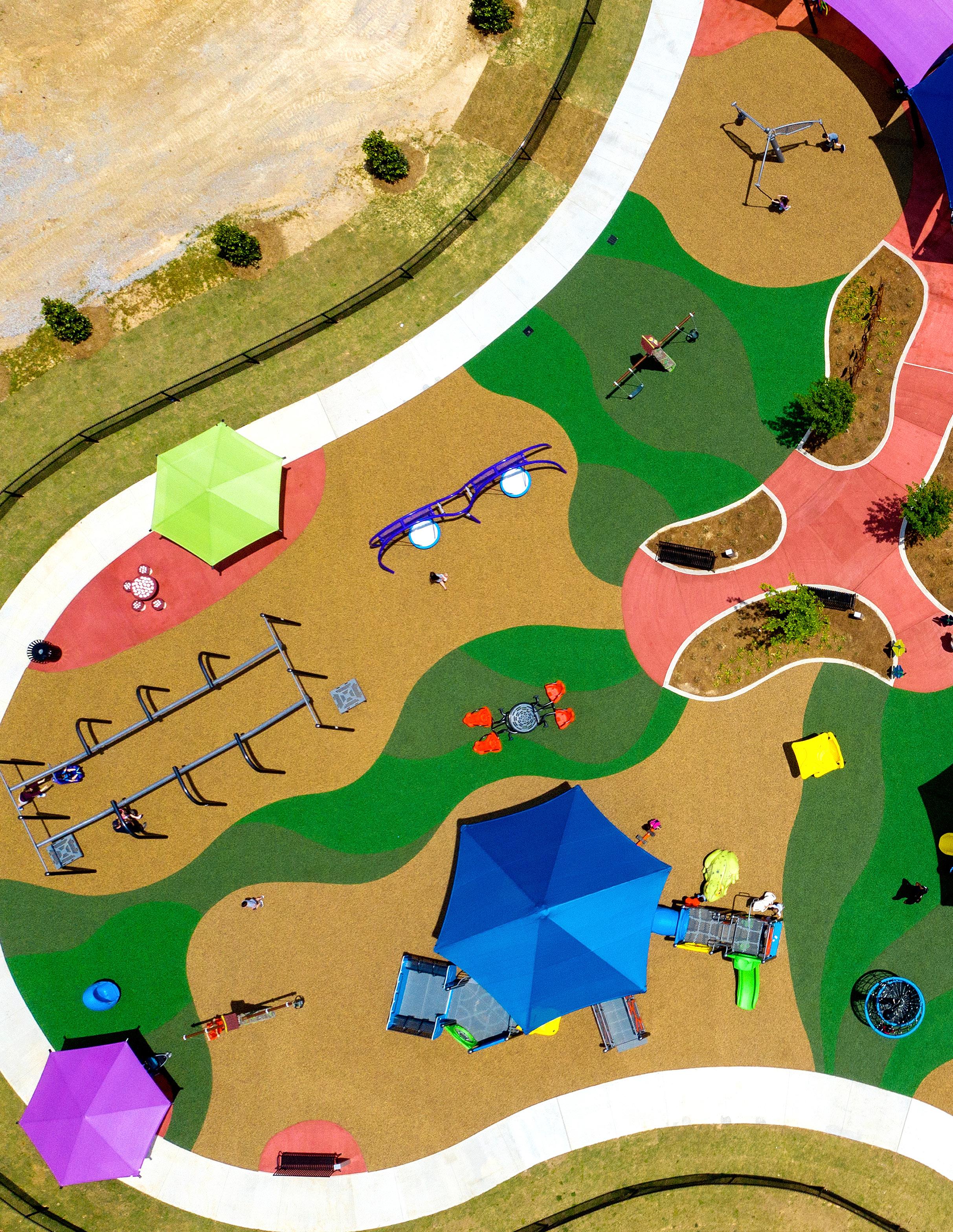
The most effective inclusive play destinations are built on evidencebased design. Developed by PlayCore in partnership with Utah State University Institute for Disability Research, Policy & Practice, the 7 Principles of Inclusive Playground Design® offers a thoughtful, research-backed framework for creating spaces that address the need of the whole child, the whole environment, and the whole community through the following design principles:
1. Be Fair – Ensure equitable opportunities across physical, cognitive, communicative, social/emotional, and sensory development.
2. Be Included – Support flexible access through ramps, climbers, links, and transfer platforms.
3. Be Smart – Use intuitive, sensory-rich design to reinforce play patterns, set expectations, and create a well-organized environment.
4. Be Independent – Promote self-directed exploration with accessible surfacing, clear travel routes, and slide transfers.
5. Be Safe – Design to meet safety standards while also supporting caregiver visibility and engagement.
6. Be Active – Accommodate diverse needs through sustained physical activity, cooperation, and socialization.
7. Be Comfortable – Create space for both movement and gathering, meeting diverse sensory and physical needs.
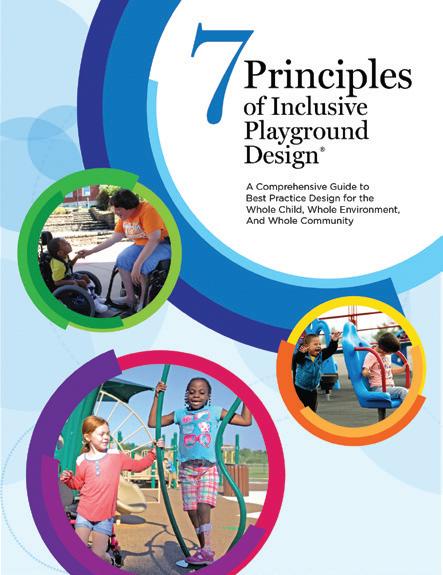
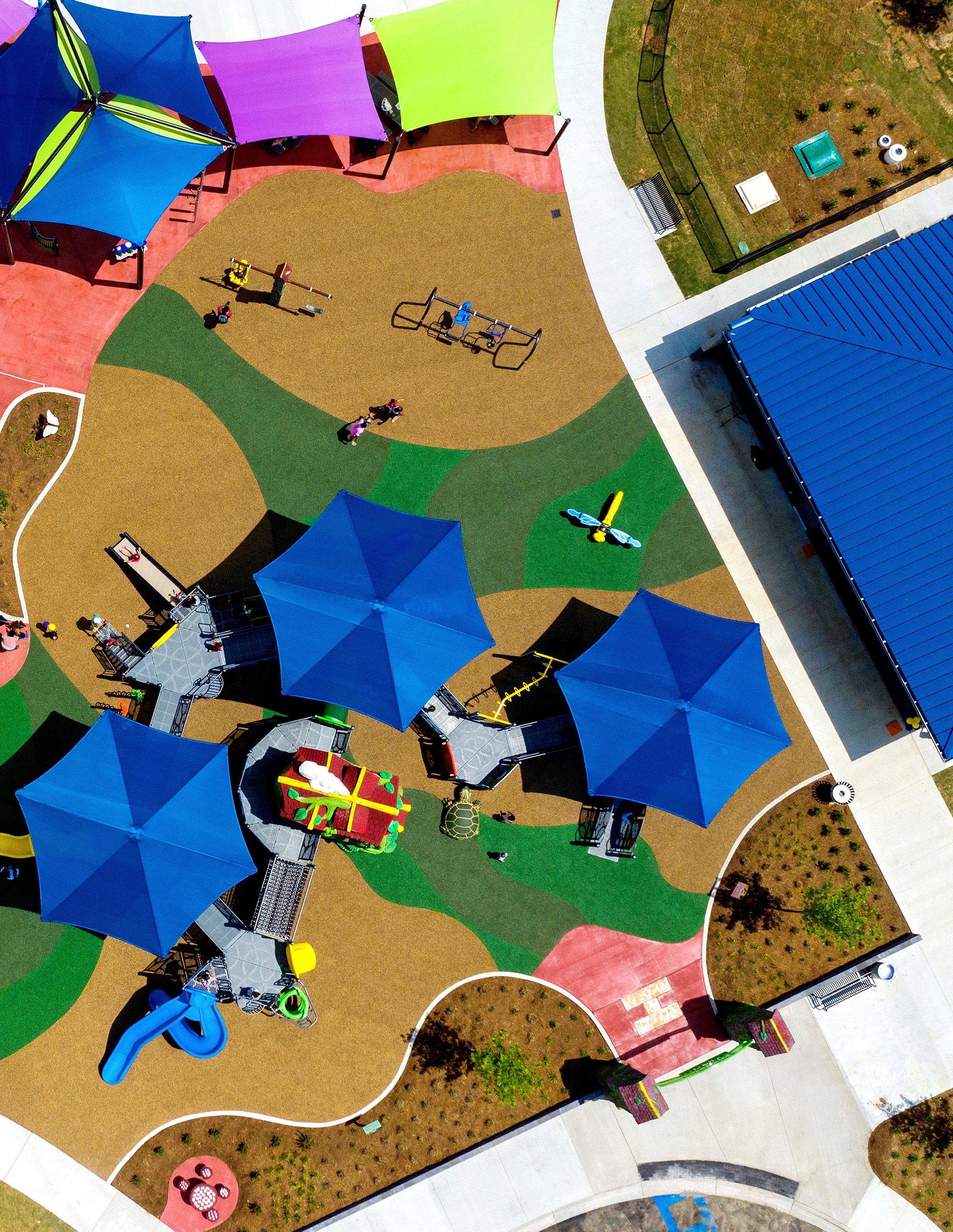
These guiding principles help create parks and playgrounds where all children - and their families - can feel inspired to play together.
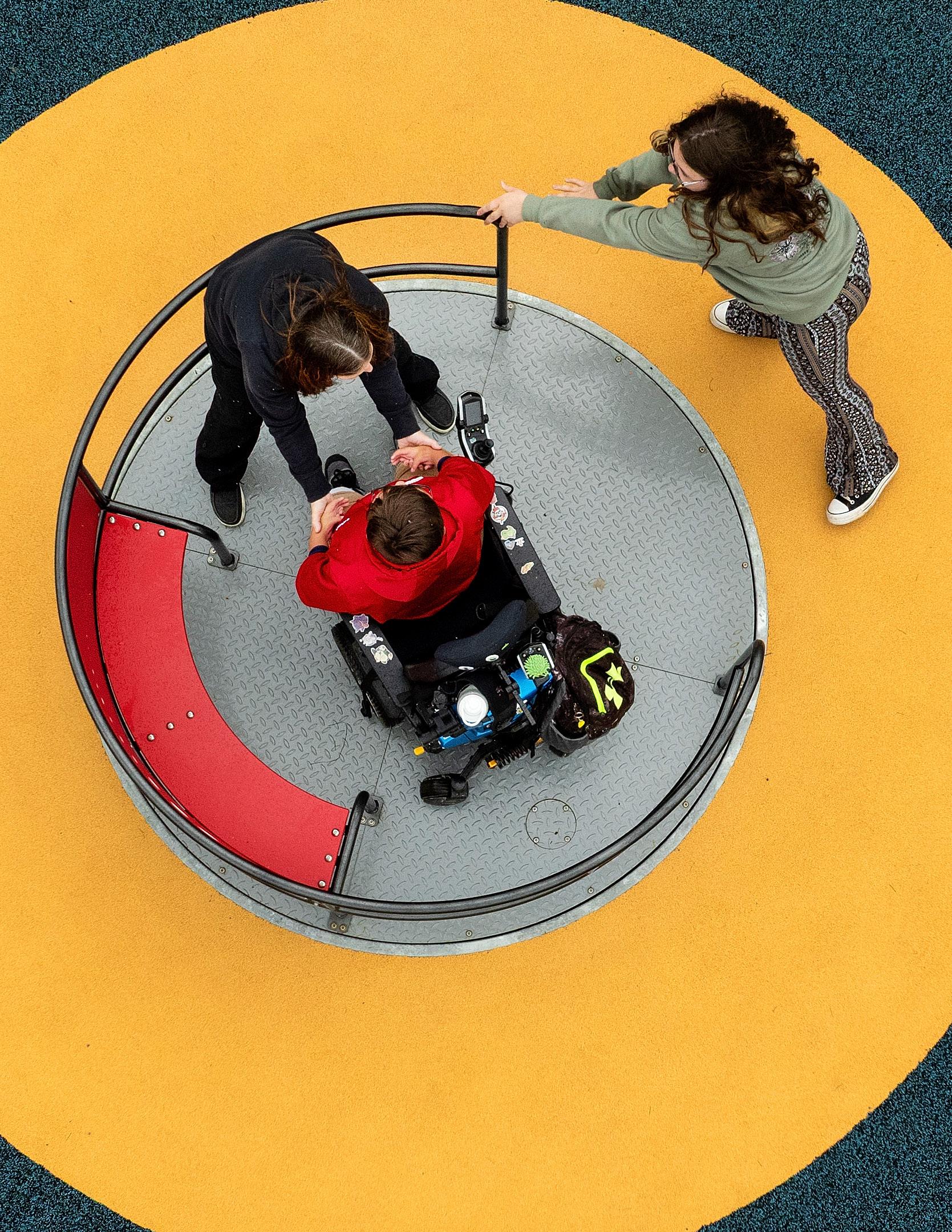

When nine-year-old Zacari Maes rolled onto the playground he immediately saw the merry-go-round. “I’ve never been on a merry-goround before!” he shouted. “Is this for me?”
His sister encouraged him to get on. She and their grandmother gave it a push. The three of them laughed together — spinning, shouting, playing — like every other family. That moment wasn’t just fun. It was freedom. It was a chance for Zacari to be part of the moment instead of watching from the sidelines. It was inclusion.
Products like our Inclusive Whirl don’t just meet a need — they create joy, connection, and belonging. Every child deserves to play, and every family deserves memories like this one.
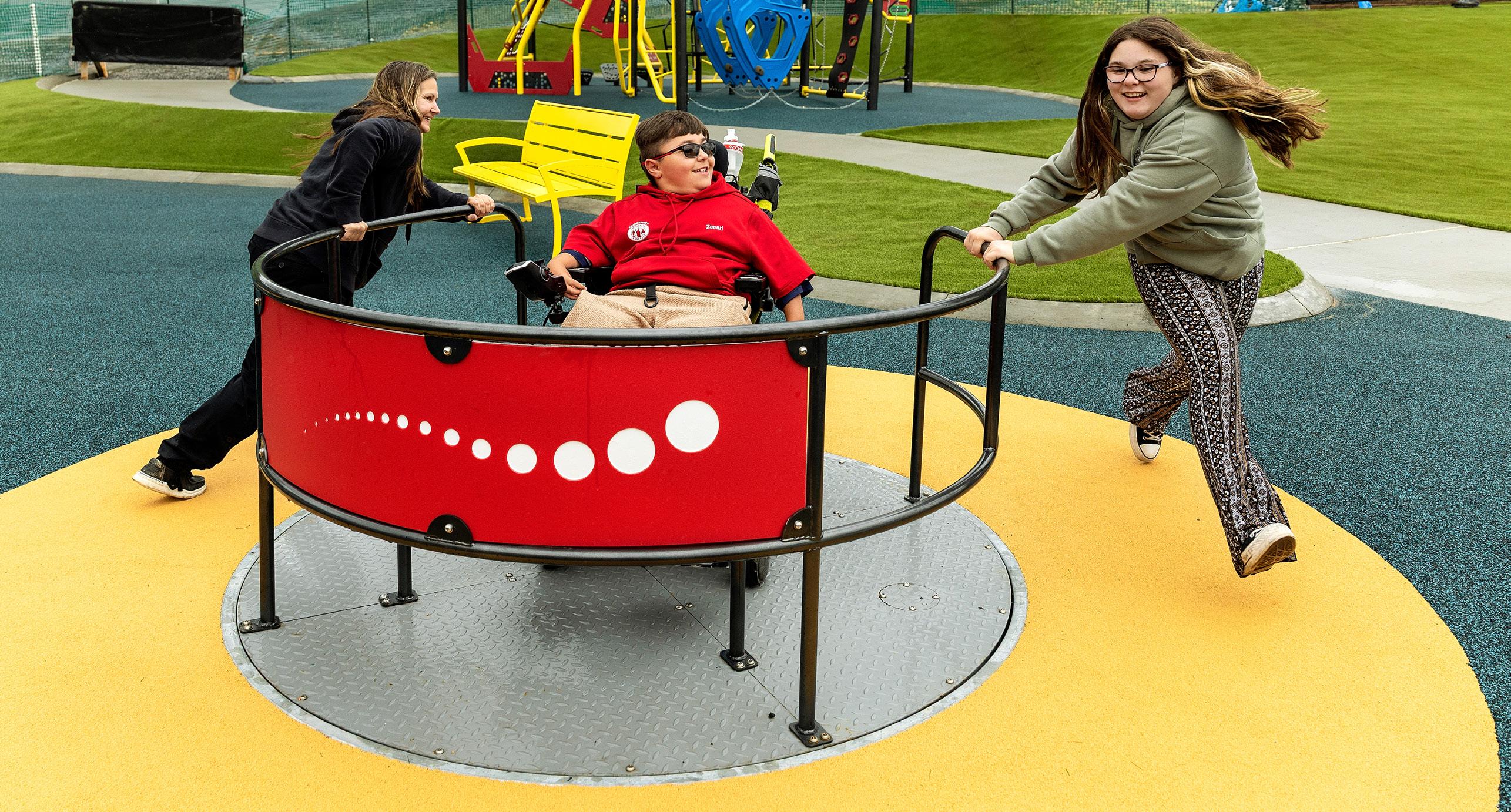
Physical activity is essential at every stage of life, offering benefits from improved cognitive function to disease prevention.1 Unfortunately, fitness experiences are often designed in silos - children are expected to play with peers, and adults are left to exercise independently.
While every age group has its own unique needs and interests, fitness doesn’t have to happen in separate spaces. With thoughtful, strategic park planning, we can create environments that invite every generation to move, play, and connect with each other. These intergenerational outdoor spaces help communities foster healthy habits and create shared experiences that last a lifetime.
As children grow older, staying active can become more challenging, especially for those not involved in sports. Their reluctance isn’t without reason; teens need outdoor spaces that feel relevant and exciting - places designed specifically with their interests in mind.
For teens who enjoy a good workout, THRIVE Studio delivers a complete outdoor gym experience with a fitness wall and 15 exercise stations. Designed to accommodate up to 30 users,
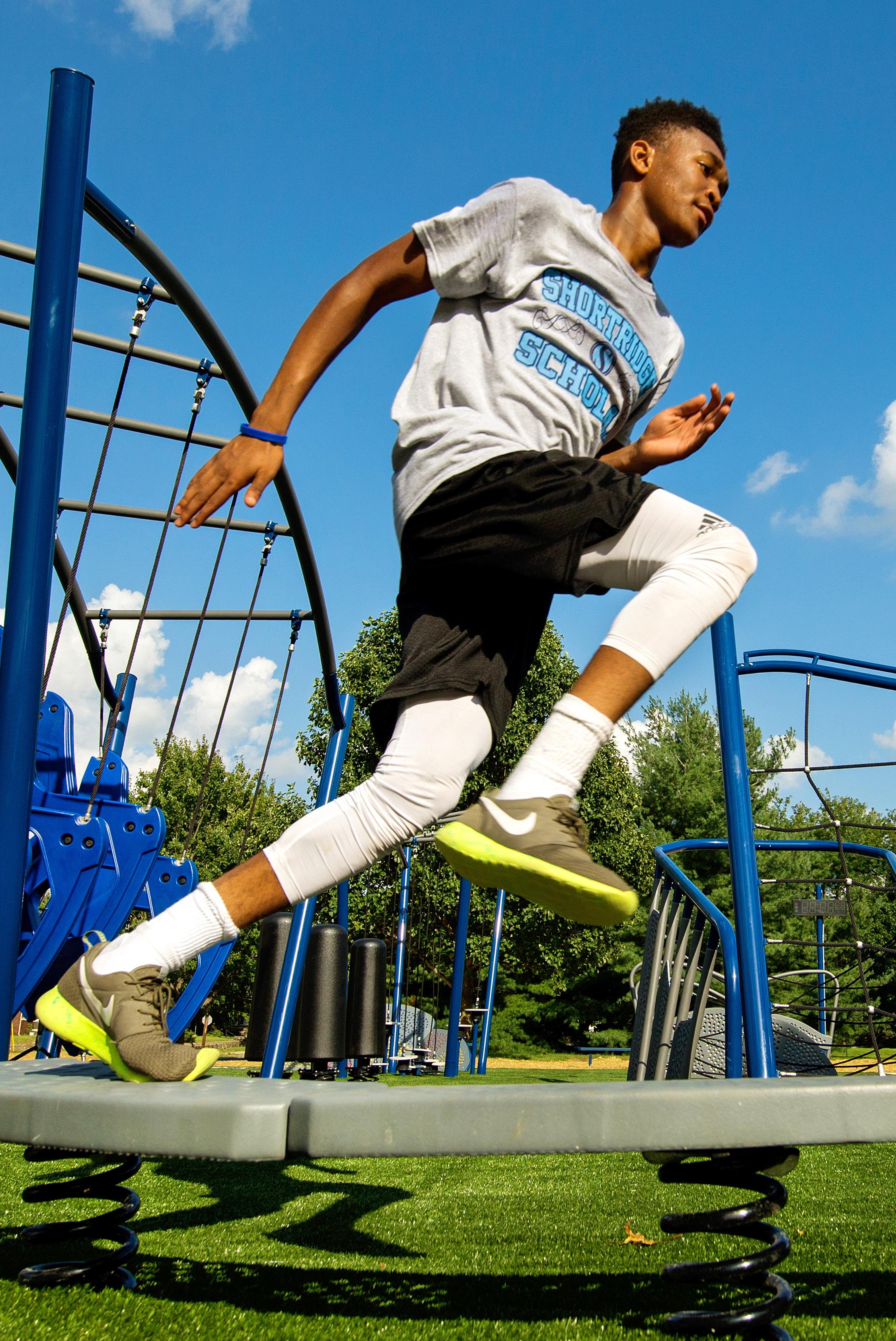
it creates a dynamic environment that fosters socialization and collaboration among peers.
Challenge Course Pro is ideal for teens seeking something exciting and high-energy. This dynamic outdoor obstacle course is the perfect place to build confidence, have fun, and create lasting memories with friends and family - one challenge at a time.
With developmentally appropriate equipment and experiences tailored to their interests, teens might just discover that being active outside is actually... fun. (Don’t worry, we won’t tell anyone.)

As outlined in Outdoor Adult Fitness Parks by PlayCore, sedentary lifestyles are strongly associated with physical and mental health challenges. Despite this connection, only about 23% of U.S. adults meet the recommended physical activity guidelines for both aerobic and muscle-strengthening exercises.3 Outdoor fitness spaces are a powerful solution, breaking down barriers to high-quality functional fitness to make it easier for adults to prioritize their personal wellness.
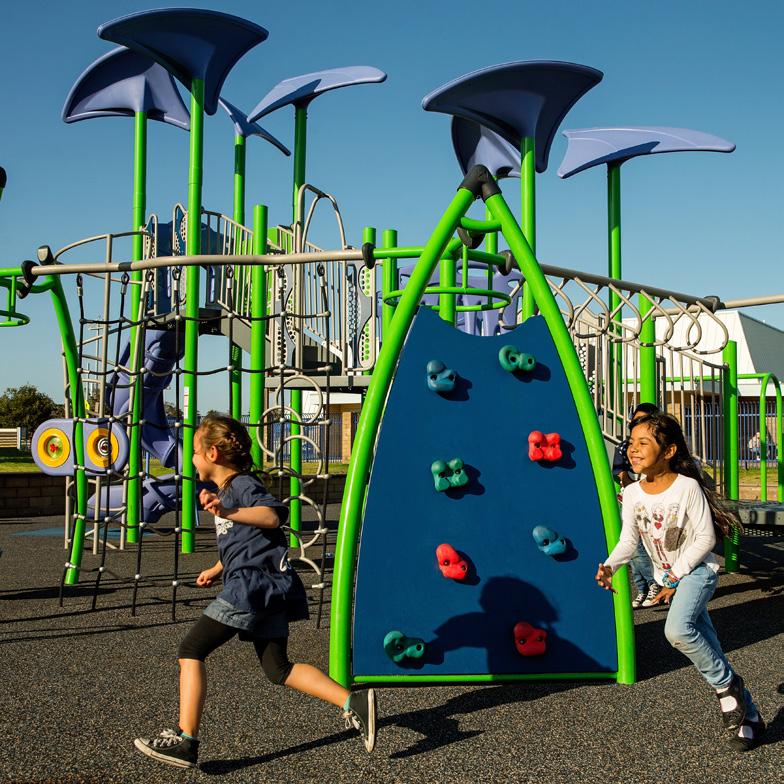
Active Childhoods are Fun-damental Research shows that children reach their highest levels of development during play.2 Through physical activity, children improve their physical strength, social skills, cognitive abilities, communication, and sensory awareness. Unfortunately, 80% of children don’t get the recommended 60 minutes of daily physical activity, resulting in the loss of critical opportunities for growth.
GTfit outdoor fitness equipment mirrors the familiar features of gym
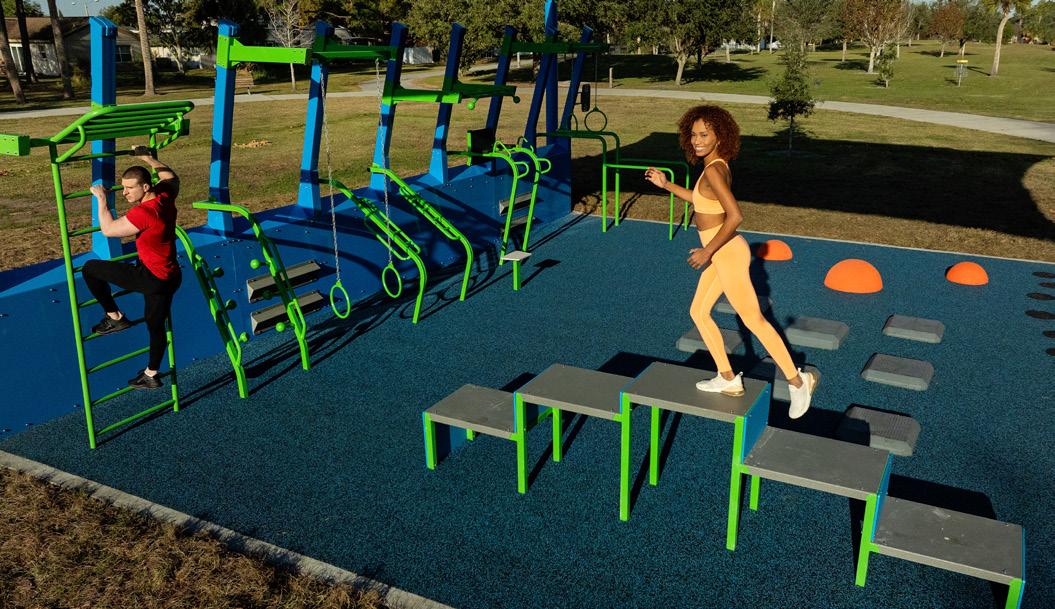
Play On!, created by PlayCore in collaboration with SHAPE America, offers a researchbased design framework to ensure children receive a well-rounded physical play experience. The framework is built around the Six Key Elements of Play, each targeting essential developmental benefits:

Balancing – Increases understanding of efficient body positioning and control
Sliding – Strengthens core stability, balance, and lower-body flexibility
Brachiating – Improves muscular strength and endurance
Spinning – Enhances balance and kinesthetic awareness
Climbing – Boosts coordination and spatial awareness
Swinging – Supports aerobic fitness, muscular force, and whole-body awareness
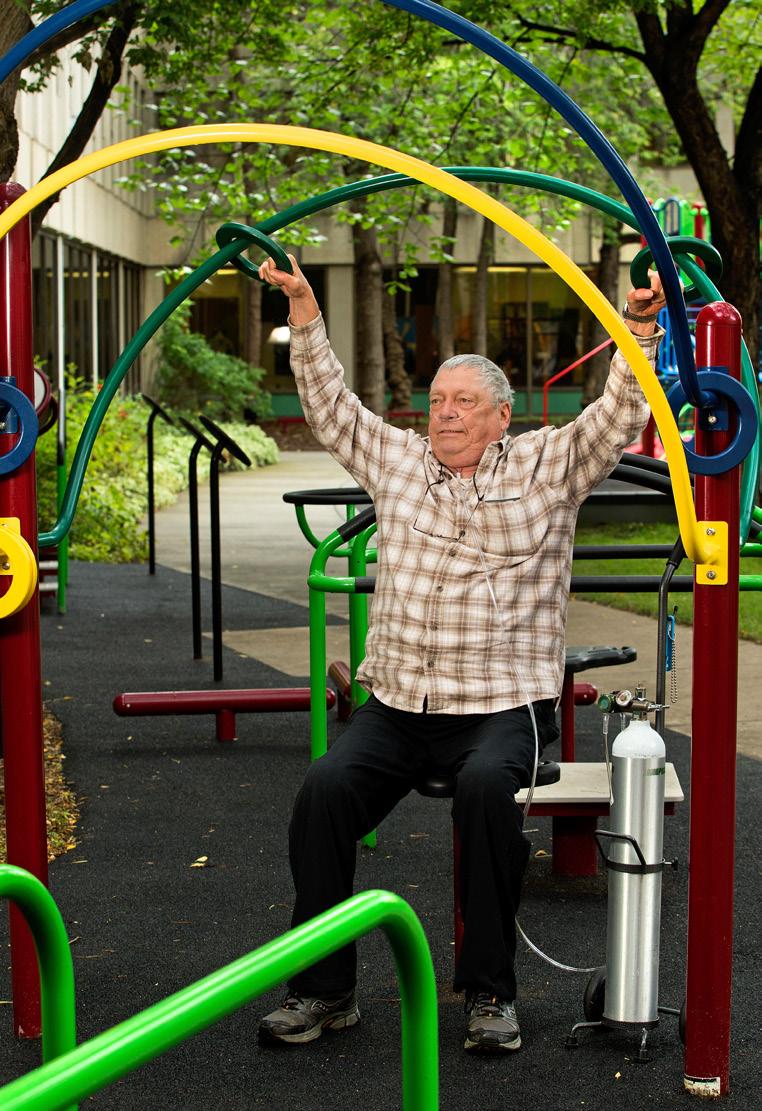
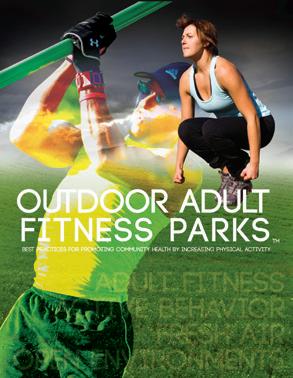
machines, delivering a traditional full-body exercise experience –without all the fluorescent lighting. Designed for all fitness levels and abilities, GTfit offers three distinct product series, allowing communities to create tailored outdoor gyms that support a wide range of health goals in an open-air environment.
Unlike indoor gyms, which often promote isolated workouts, outdoor fitness areas foster collaboration and connection. THRIVE fitness systems are designed to accommodate multiple users at once, offering both personal and group training opportunities that everyone will look forward to. With its compact footprint, THRIVE makes fitness accessible to communities of all sizes and backgrounds.
As adults age, their fitness priorities shift. Balance, flexibility, and joint health become increasingly important, as falls remain the leading cause of injury among older adults. Unfortunately, nearly 30% of adults over age 55 are physically inactive, often due to a lack of suitable options.4
To meet this need, our therapeutic GTfit equipment is specifically designed to support users ages 50+. With added stability, ergonomic features, and inclusive design, these products help older adults stay active, healthy, and connected - ensuring that everyone, regardless of age or ability, has access to the tools they need to meet their wellness goals.

Nearly 9 in 10 Americans (89%) believe that serving both children and older adults at the same location is a smart use of community resources5
There’s no age group more curious than children. As they begin to make sense of the world, they naturally look to trusted adults for guidance, especially when it comes to forming daily habits and routines.
Physical activity is no exception. When children see their caregivers prioritize fitness and time outdoors, they’re far more likely to adopt those habits themselves. In fact, children with active parents are twice as likely to be physically active.
To foster positive role modeling and intergenerational connections, we recommend designing parks that pair adult outdoor fitness equipment with children’s playgrounds. These shared spaces promote parallel play, allowing families to be active together while enjoying experiences tailored to their needs. When adults model active lifestyles, children are inspired to do the same, setting the foundation for healthy habits to form.
Children are up to 2x more likely to be active if they have active parents or caregivers 6
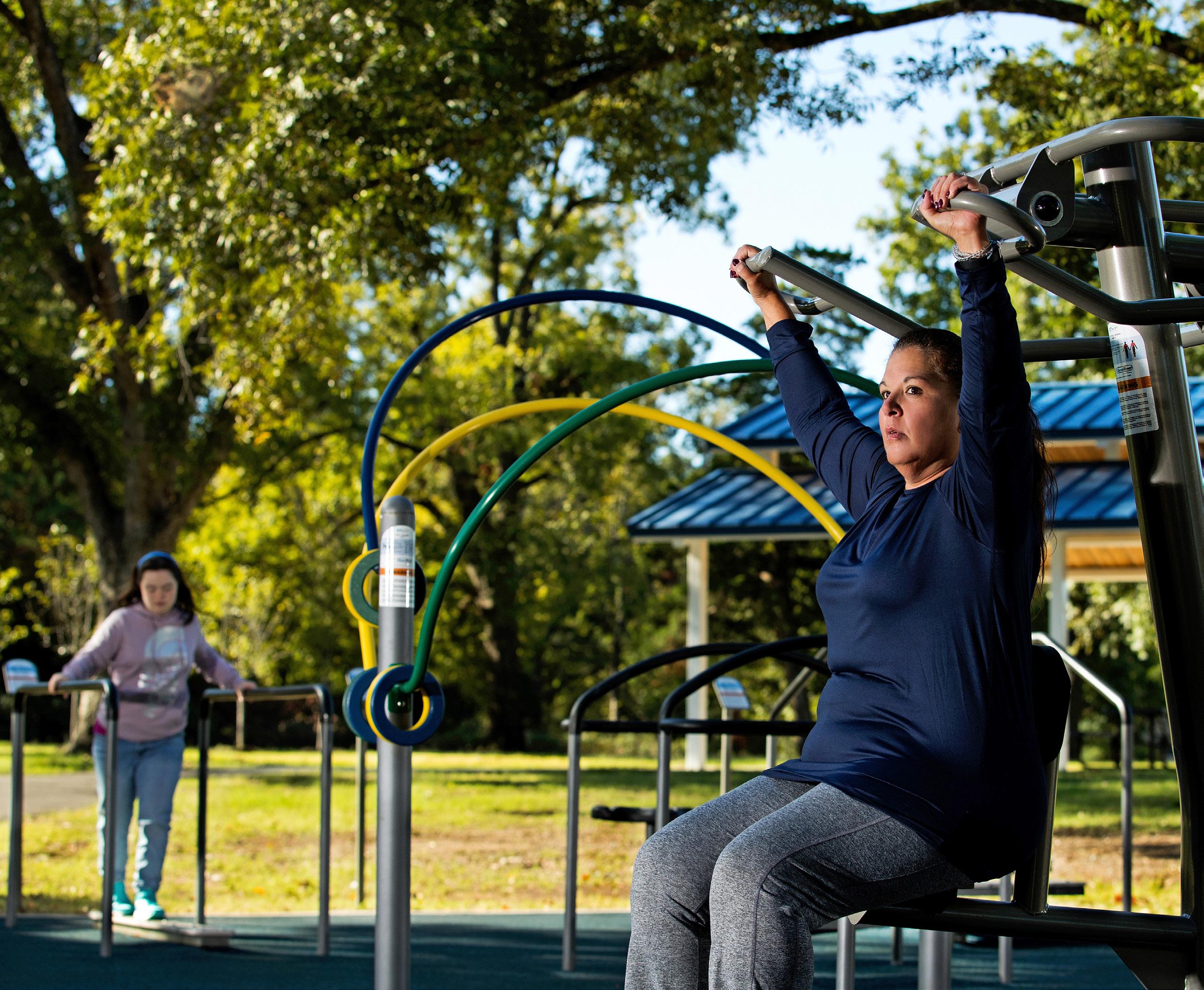
Across the country, people are craving opportunities to be active as a family. In fact, nearly 9 in 10 Americans (89%) believe that serving both children and older adults at the same location is a smart use of community resources.5
The days of adults sitting on the sidelines while children play are behind us - now, everyone can join in the fun! With thoughtfully designed spaces that support parallel play and intergenerational fitness, every family member can focus on their own wellness journey – together. These shared experiences don’t just promote healthier, more active lifestyles, they create lasting memories that strengthen family bonds and build stronger communities.
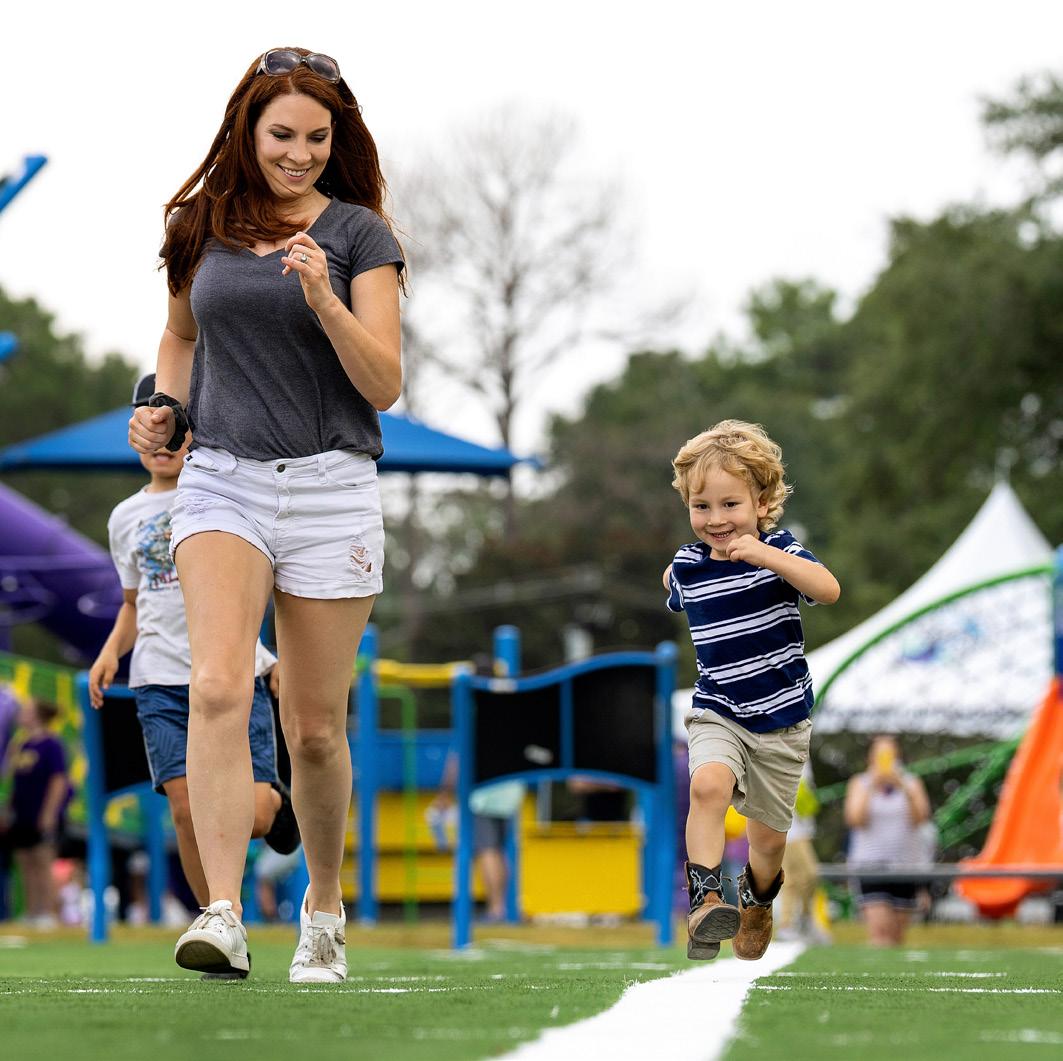
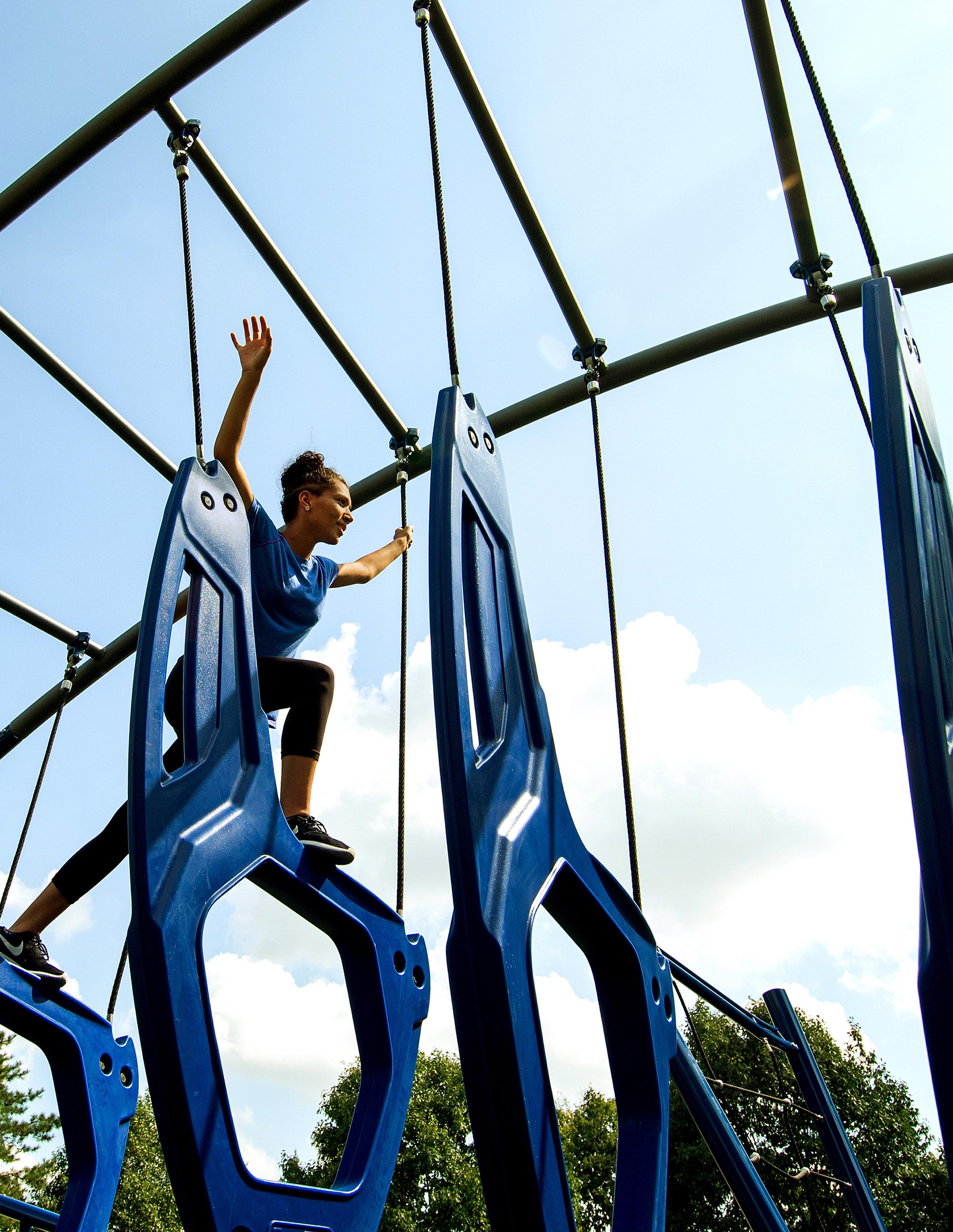
Indianapolis' Riverside Park was already a community gem—but when Challenge Course opened, it became the main attraction. Funded by the Indianapolis Colts, this outdoor obstacle course redefined what play looks like for older kids and teens (not to mention their parents) who still like to compete (and win). Think ninja warrior meets NFL combine.
Challenge Couse is the perfect answer for older kids who "age out" of a traditional playground but still want to climb, race, leap, and laugh. Since opening, the course has drawn thousands of new visitors to the park, transforming it into a destination for athletes, thrill-seekers, and anyone motivated to move. Game on.
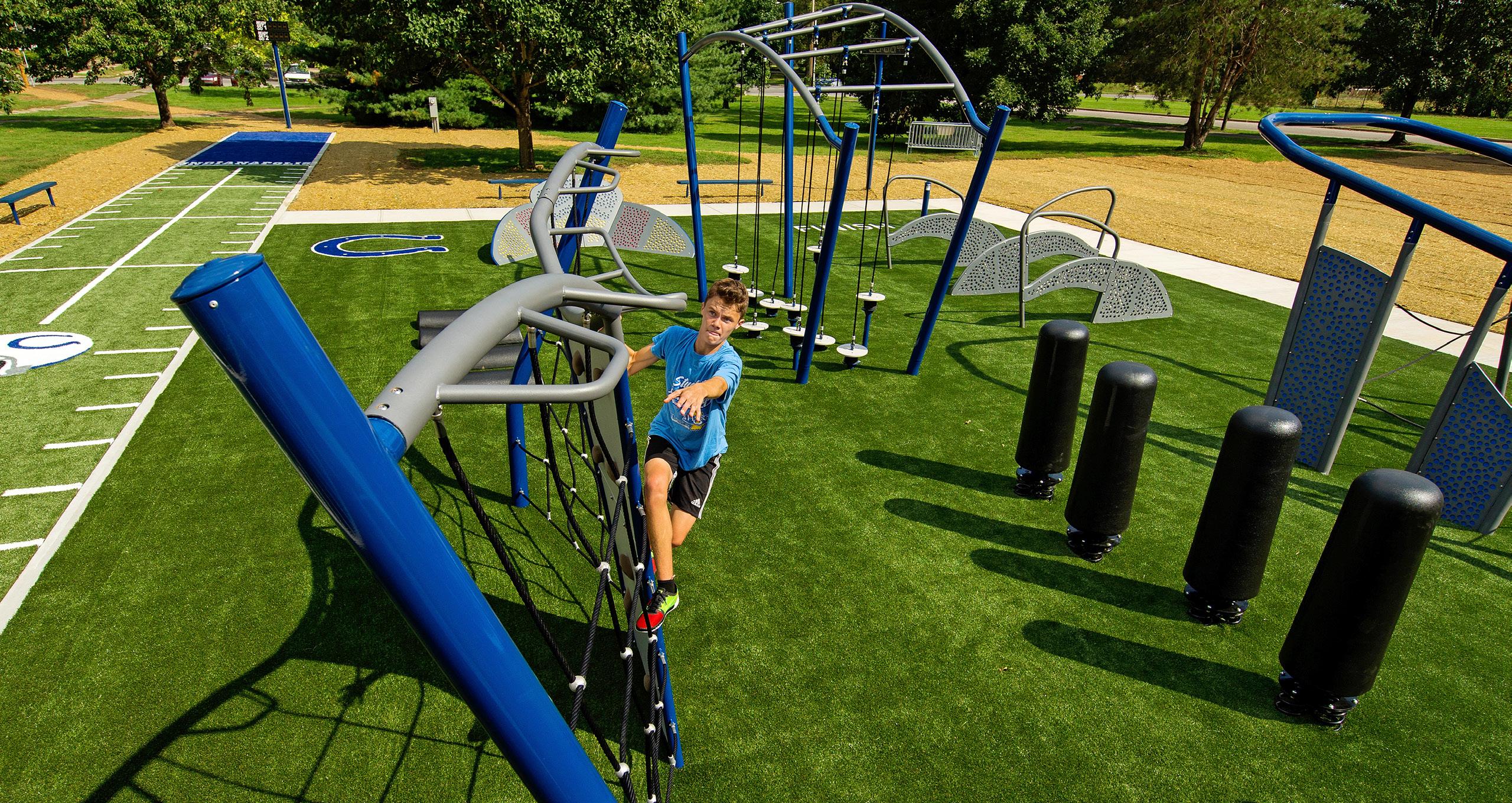
From tailored dresses to turning a family photo into a phone’s lockscreen, 81% of people prefer personalized products and experiences.1
When local parks include personalized play elements, people are more likely to visit. Personalization fosters a sense of identity, and from that identity, community grows - creating spaces where everyone can relate, connect, and come together through play.
From logos embedded in surfacing to fully immersive play destinations, personalization comes in all shapes and sizes - but it always starts with a story about what makes your space unique.
The best way to begin designing personalized play elements is by tapping into what makes your city unique. Whether it’s the local wildlife or historic landmarks, every community has a story worth celebrating.
When Morristown, Arizona began planning Lake Pleasant Park, they found identity in the resilient animals that thrive in the surrounding Arizona desert. Our custom play division, Landmark Design, designed a bald eagle climber, a salamander slide, and even a tortoise climber “munching” on a blossoming cactus to pay homage to the animals native to Arizona. With integrated shade structures to help parkgoers stay cool under the desert sun, this park celebrates both the beauty of the local landscape and the remarkable adaptability of its wildlife.
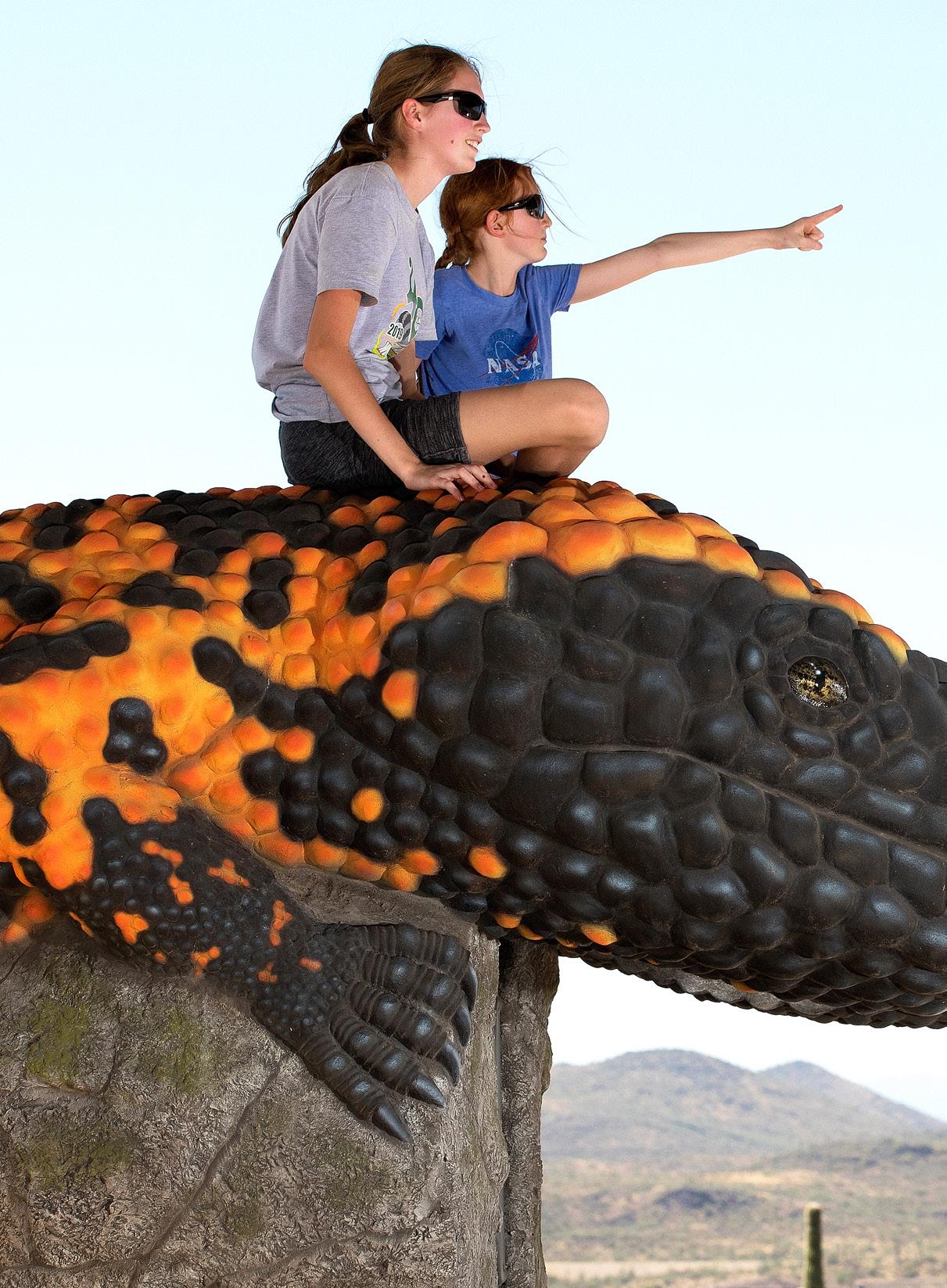



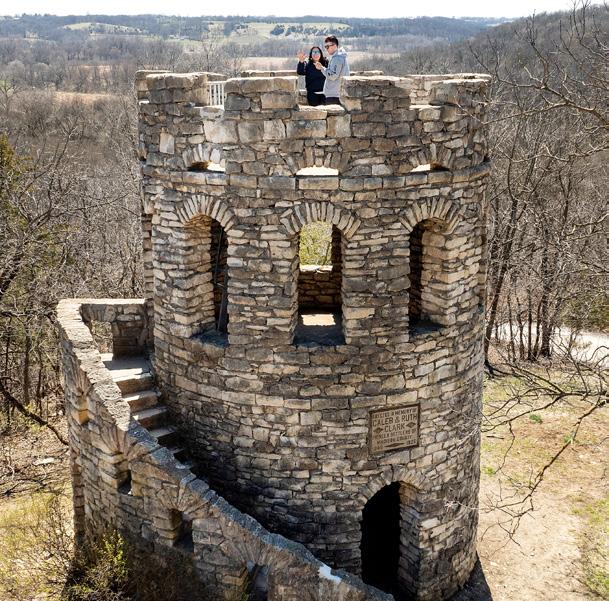
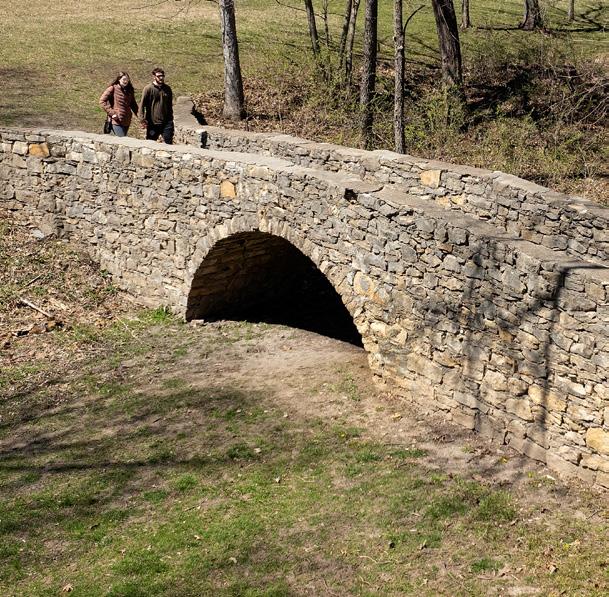
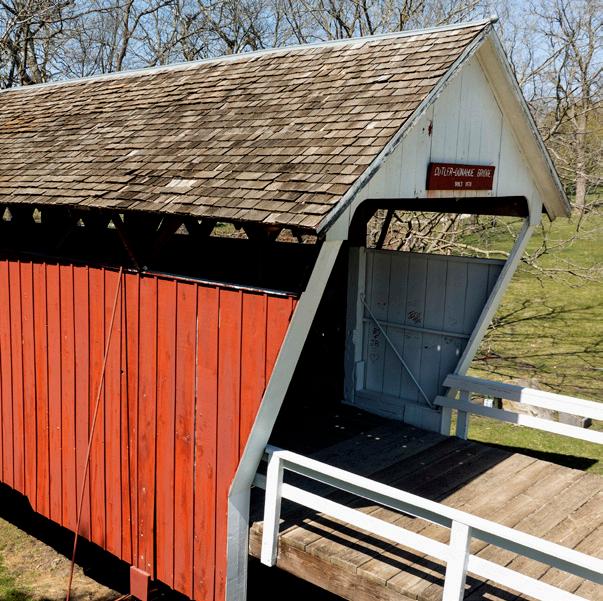
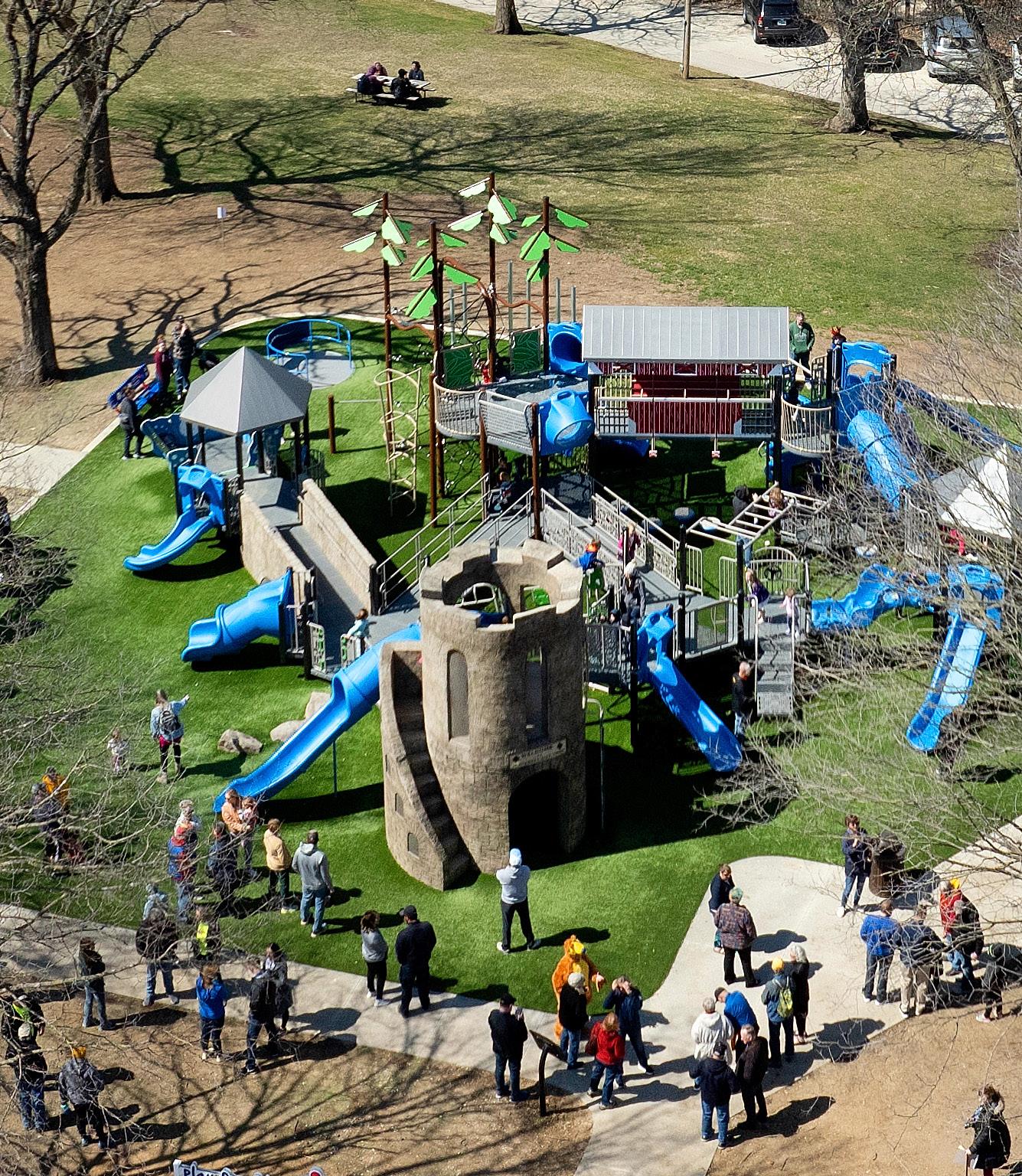
The city of Winterset, Iowa took a different approach to playground design - one rooted in its rich architectural history. Rather than starting from scratch, they chose to honor the iconic landmarks that make their city unique. At Winterset City Park, a play structure modeled after the cherished Clark Tower invites parkgoers of all ages to climb, explore, and learn more about this beloved monument and the stories behind it. The park also features covered bridges - an iconic part of the area’s identity, even featured in the film “Bridges of Madison County.” 2 Nesra Yannier et al. ,Active learning: “Hands-on” meets “minds on”. Science374,26-30(2021).DOI:10.1126/science.abj9957

Another great way to personalize a playground is by paying homage to the past. Every city has its own significant figures and events, offering an opportunity for all ages to connect with local history while having fun. By celebrating these moments, parkgoers can develop a deeper pride in their community and better understand what makes their city unique.
Little Debbie® Park, nestled in Collegedale, Tennessee, was created to honor the city’s rich history. This park shares the story of a small-town bakery that became a household name, featuring educational signage and play structures inspired by their signature snack cakes. From Cosmic Brownies to Oatmeal Crème Pies, this park serves as a sweet tribute to the community’s history, creating a space where all generations can bond through community pride.
Research shows that interactive learning activities can significantly boost academic performance compared to traditional lectures.2 When children are fully immersed in what they’re learning, they form stronger associations and develop a deeper understanding of the subject.
To teach kids about the vital role bees play in our ecosystem, the Smithsonian Zoo created
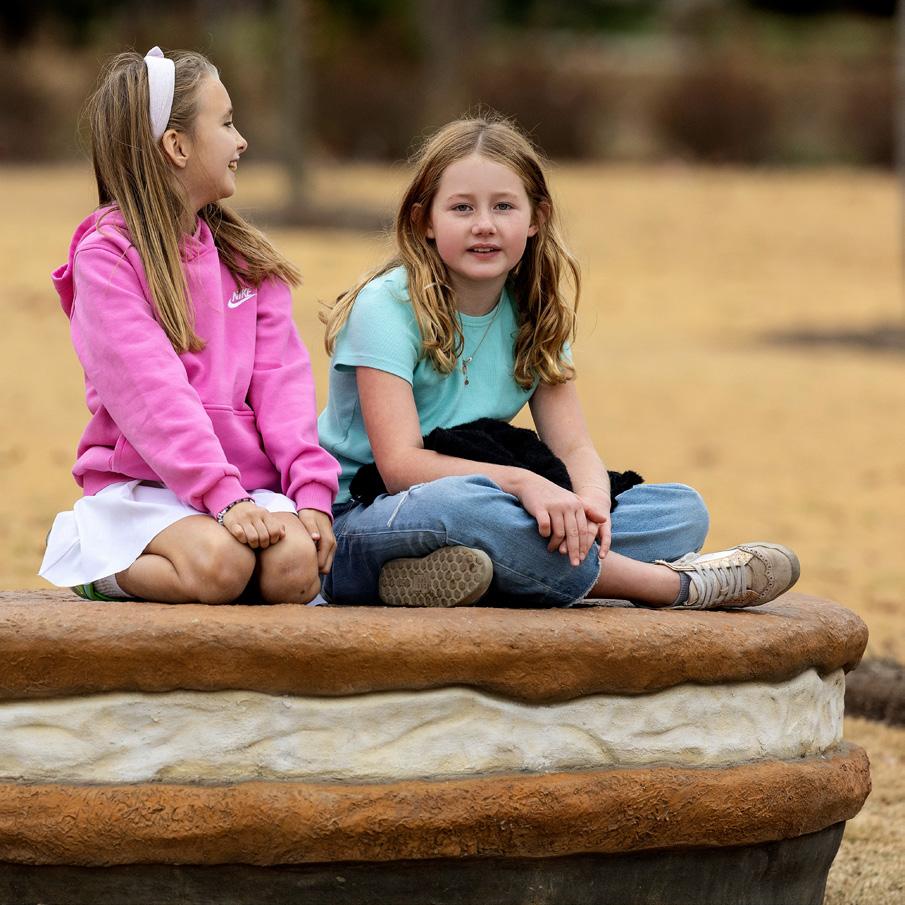

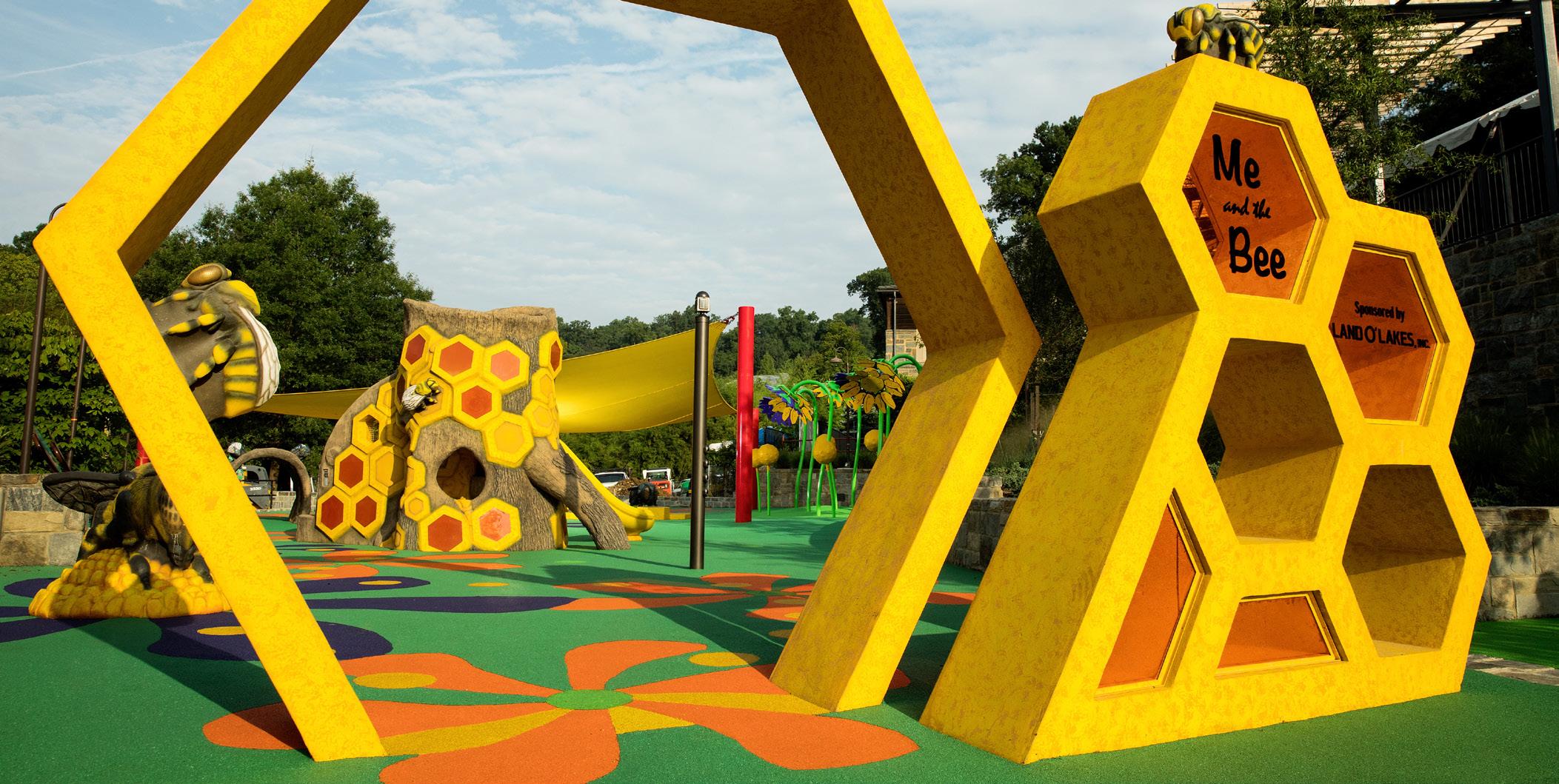
an immersive play environment with giant bee sculptures and honeycomb-themed climbers. These larger-than-life experiences invite children to imagine life inside a buzzing colony, exploring the world of pollination through hands-on play. As their curiosity grows, they’re bound to 'fly' over to an adult with questions - turning playtime into a shared learning experience for all ages.
Incorporating the natural terrain is a great way to make a park feel one of a kind. Whether it’s as simple as using natural materials or as ambitious as designing equipment around existing landscaping, the result is a playful space with a distinct identity.
Explore Canyon Park in Washington, Utah, a shining example for natural design. Instead of leveling the desert hills, this playground embraces them with custom tube slides and net climbers that follow the contours of the terrain. This thoughtful integration creates a park experience that’s not only fun for all ages, but unforgettable - there’s nothing else quite like it.
Drawing influence from the surrounding environment is another great way to personalize a park. At Catalina Island’s Knabe Park, the nearby ocean inspired the creation of a pirate-themed playground, complete with a giant ship and climbable whale. This themed space sparks imaginations and invites parkgoers of all ages to explore what makes their community unique.
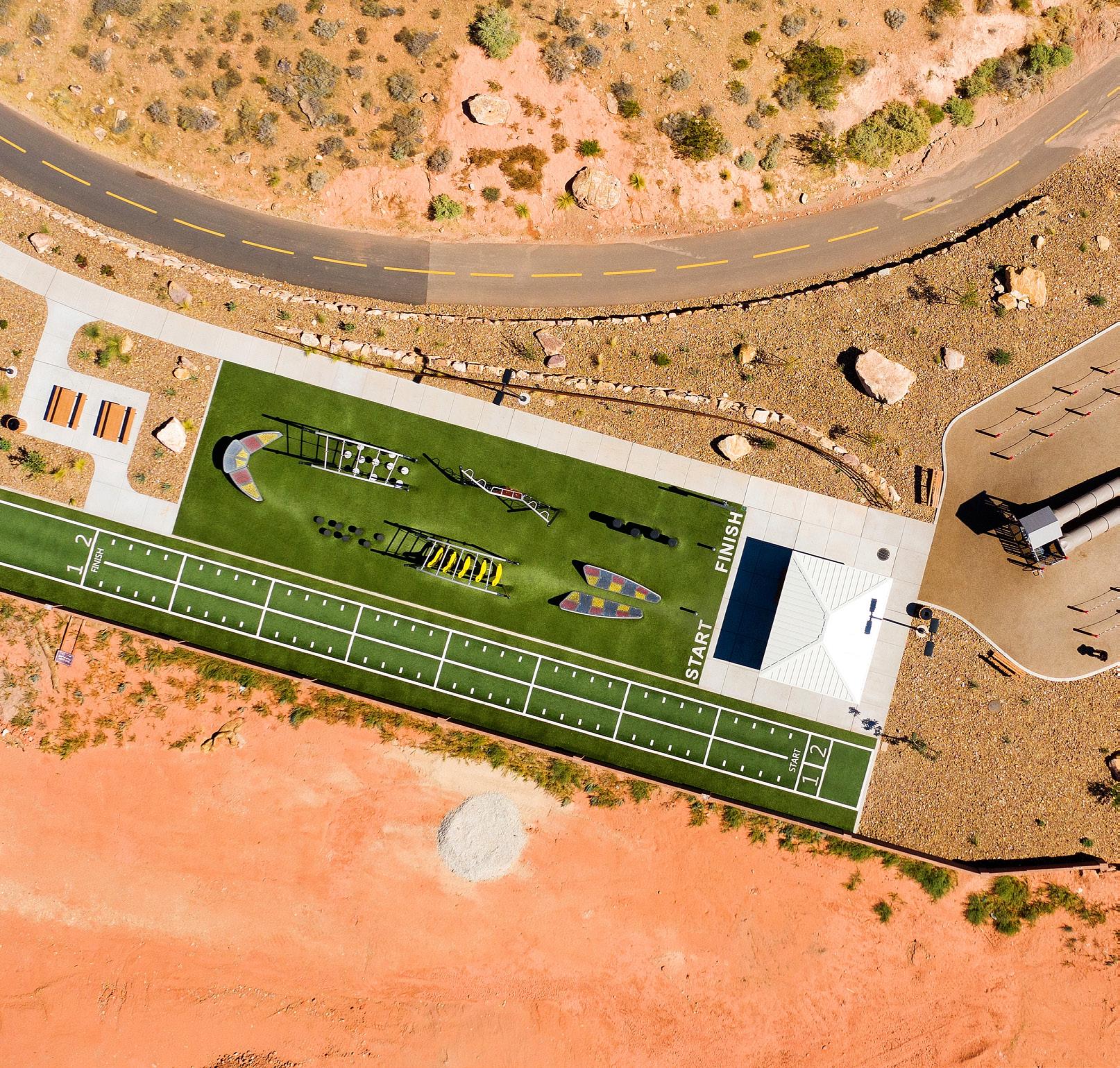
According to Transformational Impact by PlayCore, the three key design strategies for promoting intergenerational play are aesthetics, social offerings, and openness. While personalized play elements certainly enhance the aesthetics of a space, they also contribute significantly to its openness – or its ability to welcome people of all ages.
Every generation has different needs and interests, but we’re all united by a shared desire for community. With a little creative thinking, any playground can become an intergenerational haven by incorporating personalized elements that reflect local pride and shared identity, reminding everyone that we’re not as different as we seem.


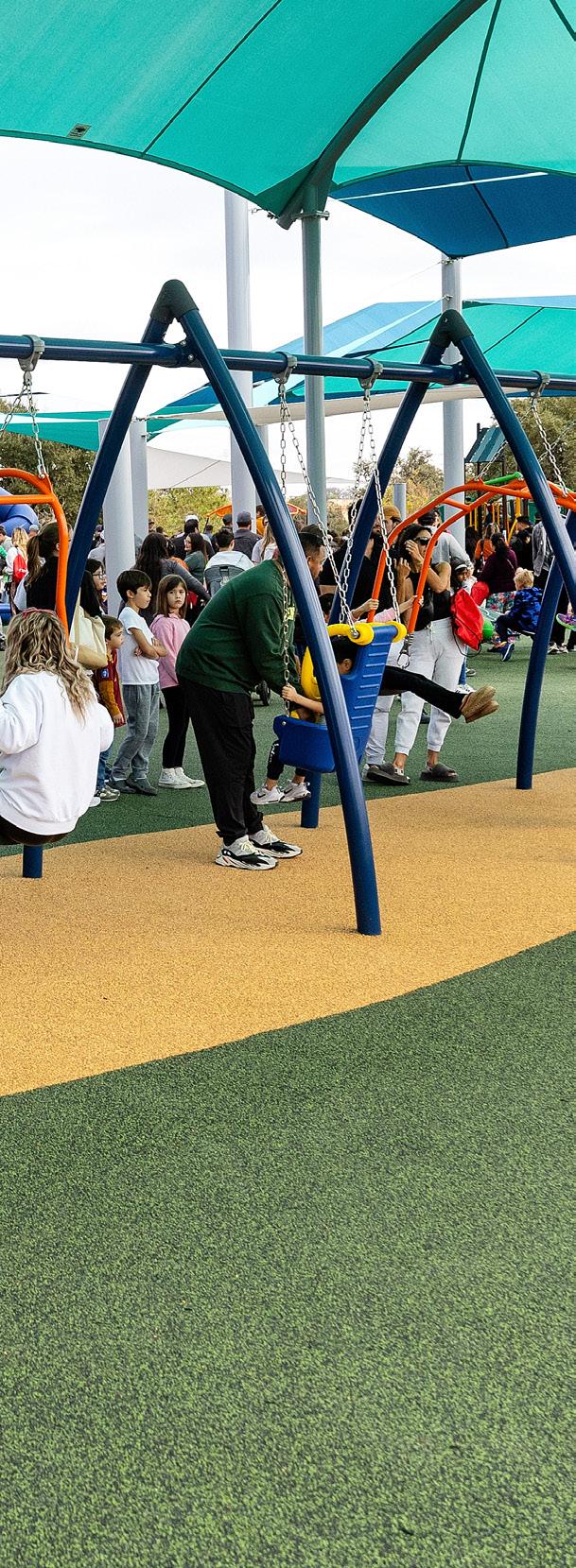
Now, more than ever, communities are seeking innovative ways to unite children, families, and communities through the power of play and recreation”
PLAYCORE
Transformational Impact® Designing Public Spaces to Promote Intergenerational Play & Recreation
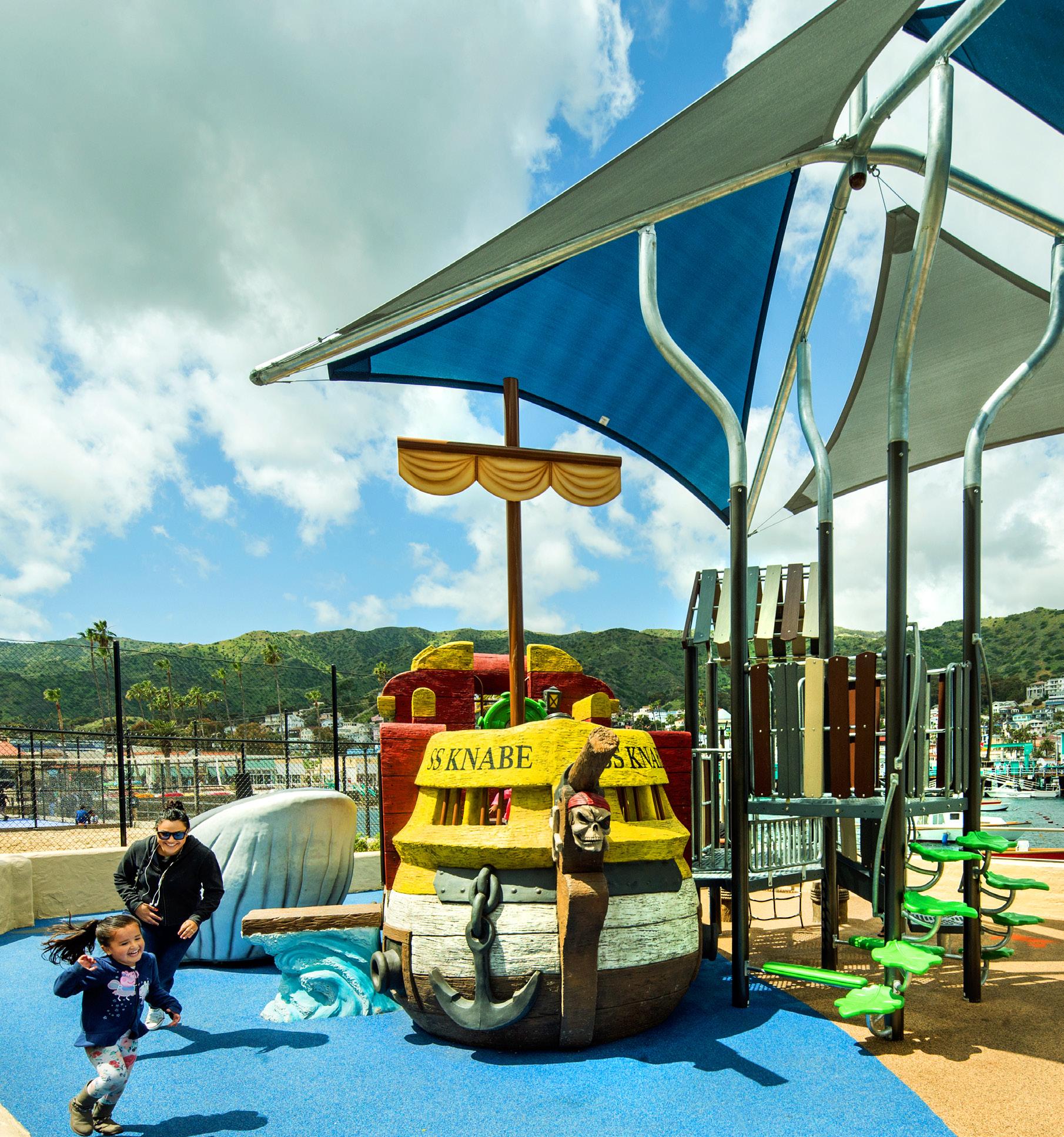

They came for a quick trip to the playground. “Ten minutes,” the dad said. “We have lots of things to do.” His daughter was interrupted mid-pout when she heard her father exclaim, “What is that?”
It was a GIANT whale. It was big; no, not just big — bigger than life. Hand-sculpted and painted to look like it just leapt from the sea, this Fun Forms whale stopped them in their tracks. The daughter climbed on first. Dad followed. For a moment, they weren’t in a neighborhood park — they were magically transported to a wild ocean adventure. That’s what makes Fun Forms unforgettable. They’re fun, fast, and affordable ways to personalize any park, and they encourage people of all ages to experience the magic of play. Fun Forms spark imagination, bring families together, and create custom playground moments you can’t find anywhere else.

In parks and playgrounds across America, something powerful is happening. Cities big and small are starting to use real data—and using it to build smarter, healthier, more inclusive spaces for everyone.
For decades, parks were seen as amenities—nice-to-haves, not must-haves. Empowered by real numbers, local governments are proving that parks aren't just casual destinations. They're essential infrastructure for improving public health, equity, and community connection. The secret weapon is measurable outcomes. Here's how data is changing the game.
Let's start with the obvious: if you don't count who's using your park, you can't know if it's working. From old-school manual tallies to mobile-device-powered heat maps, cities are investing in tools that provide a clear, objective picture of how their parks are used.
Foot traffic counters—those little radar devices nestled in trail posts or near playground entrances— have become standard issue in many communities.
In Clearwater, Florida, data from trail counters helped resolve public concerns about speeding e-bikes, showing that fewer than 1% of riders were exceeding the speed limit—no guesswork, no drama—just data.
Manual counts and surveys continue to play a crucial role. Human eyes and ears catch things sensors can't, like the age or physical ability of park-goers. This qualitative data, when layered with tech-based counts, reveals a fuller story: not just how many people are using a space, but who they are and why they're there.

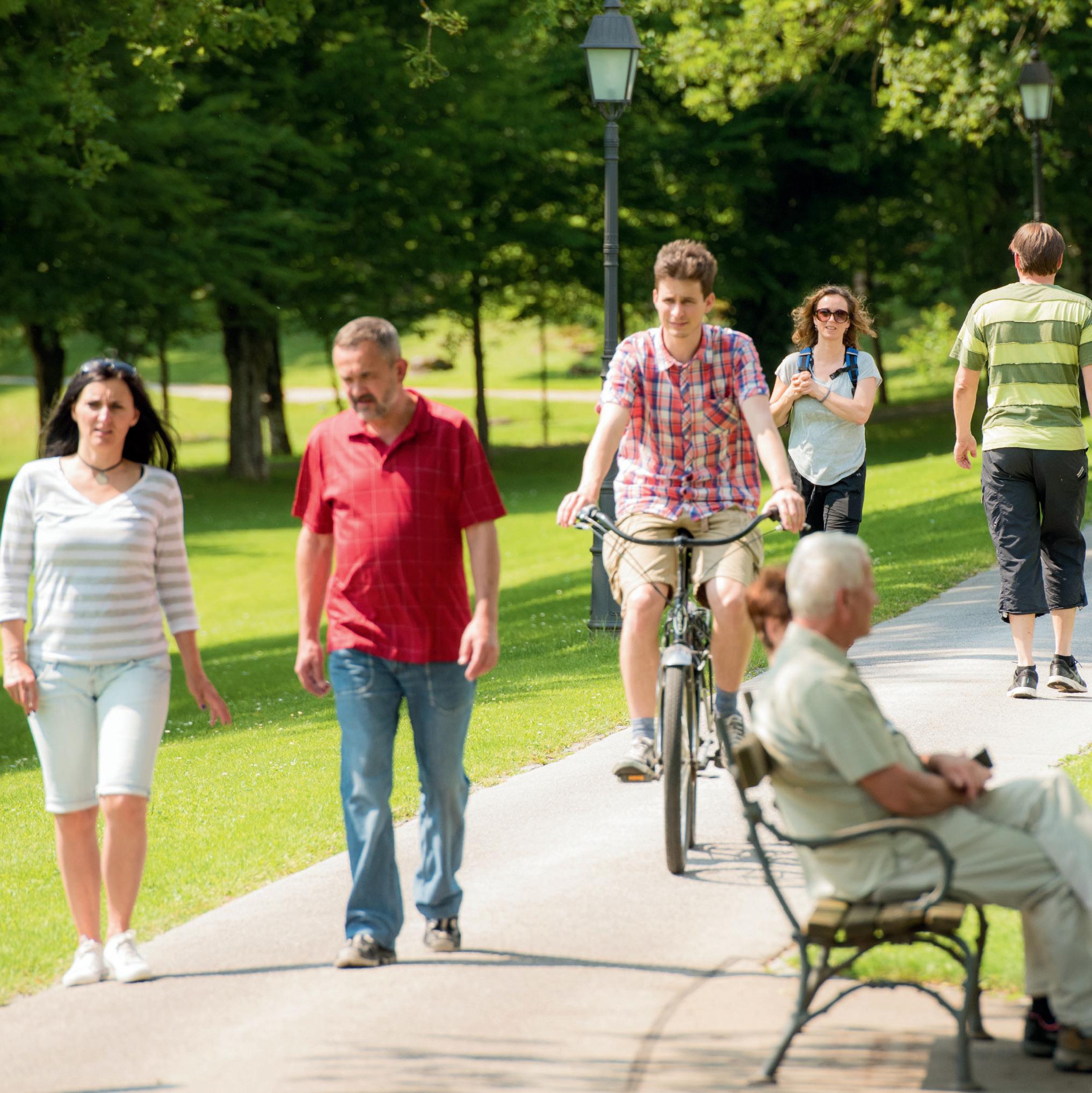
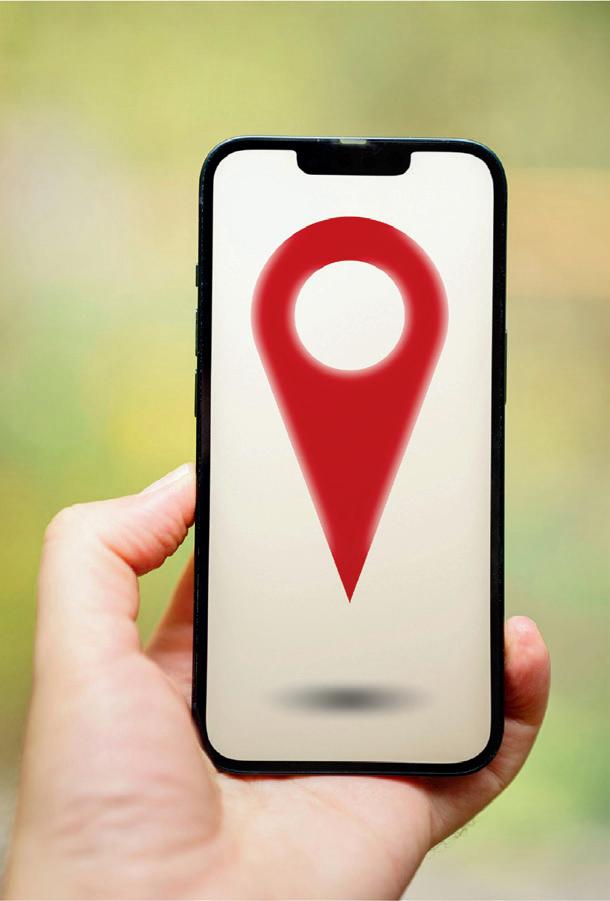
One of the most transformative tools in the public space playbook? The smartphones in our pockets. Mobile device data—gathered anonymously through apps with location services enabled—can now show planners which parks are getting traffic, what time of day people visit, how long they stay, and even where they're coming from.
Cities like Denver have leveraged this technology, utilizing it to place portable toilets in high-traffic areas and to pinpoint which parks are underperforming. More importantly, by cross-referencing device data with Census information, planners can estimate whether parks are serving all demographics equitably. If a park isn't drawing visitors from nearby neighborhoods—or if it primarily serves only one group—leaders can use that insight to shape future investments.
While mobile data like this often raises some privacy concerns, it's essential to note that this data is directional and statistical, not personal. It's about patterns, not people. However, when used responsibly, mobile insights are transforming the way communities approach access, equity, and inclusion.
PlayCore has taken a leadership role in connecting data with on-the-ground improvements. Through its National Demonstration Site (NDS) Network, the company collaborates with local governments to build parks using research-based design—and then tracks the results.
Each NDS is more than a pretty space. It's a living data lab. Once a park opens, PlayCore's Center for Outreach, Research, and Education (CORE) team collects data on how the space is used, what visitors think, and how long they stay.
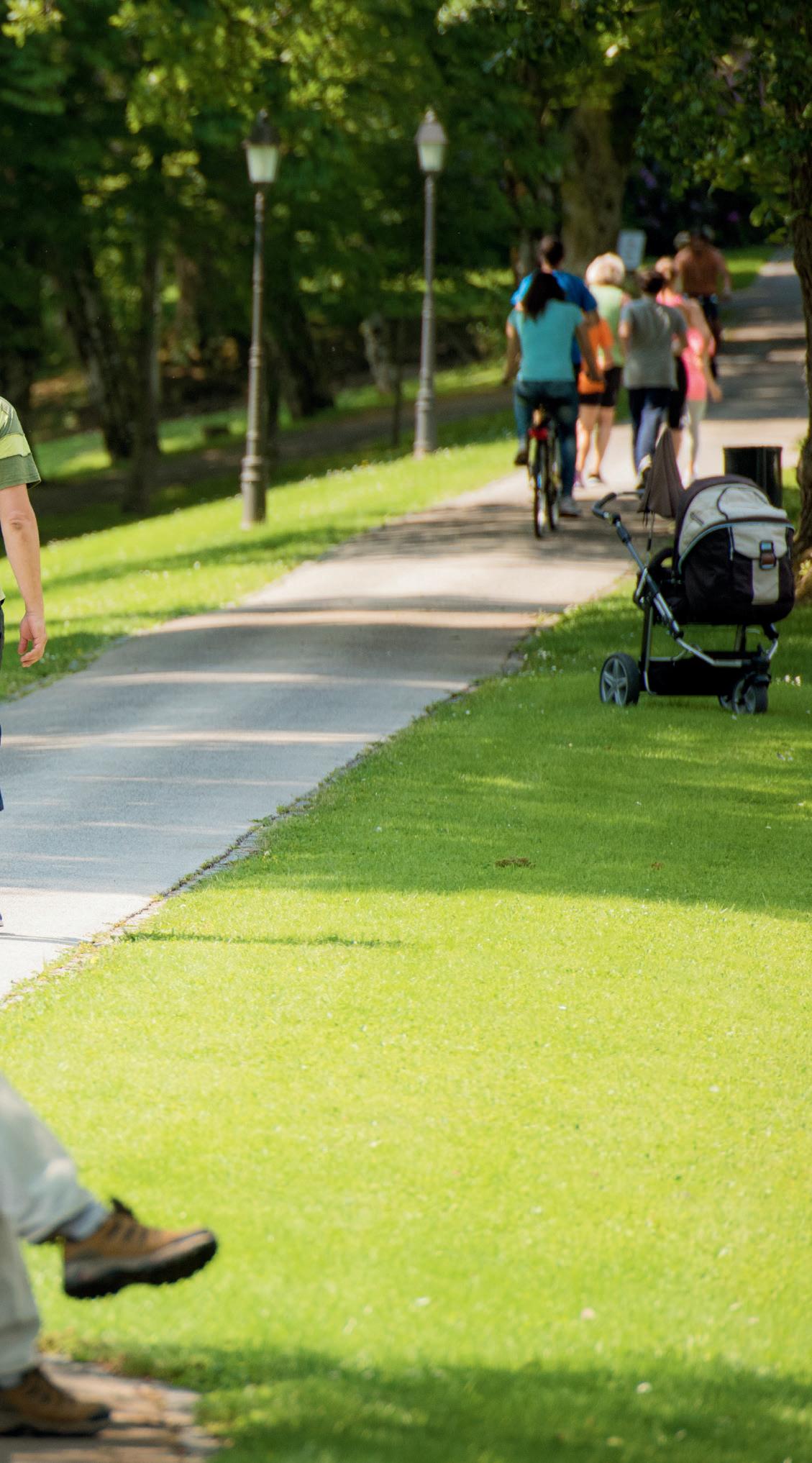
The results are remarkable:
• 99% of visitors engage in physical activity.
• 96% stay at least 30 minutes.
• 97% say they'll return.
That's not just a win for public health—it's a blueprint for how to design a successful space. And communities can take this data straight to stakeholders, showing that investments in play and recreation pay off in real, measurable ways.
PlayCore takes it a step further by aligning each site's outcomes with a set of community vitality indicators, including social & emotional health, physical health & lifestyle behaviors, and community engagement, and more. That kind of storytelling, rooted in evidence, helps local leaders advocate for parks not just as leisure spaces—but as tools of transformation.
30% increase in satisfactioncommunitywhen using data for park planning
Data doesn't just inform how many people visit a park—it shapes how those spaces are designed to serve people of all ages. Intergenerational design is gaining traction nationwide, and for good reason: parks that welcome every age group foster stronger community bonds, increase physical activity, and deliver higher ROI on public investment.
Through mobile device data, survey feedback, and observational studies, cities are identifying when and how families, teens, adults, and older adults use park space—and, more importantly, where those uses overlap. Suppose data shows that parents spend most of their park time passively watching kids play or that older adults don't venture near youth areas. In that case, that's a signal to reimagine the space.
Forward-thinking communities are responding with strategic design choices, such as pairing adult fitness stations near playgrounds, adding social seating zones between play areas and walking trails, or integrating activities like walking loops, nature-based play, and outdoor gyms that encourage shared participation across generations.
PlayCore's NDS program has directly supported this approach. Sites that include adult fitness and youth play components often show higher engagement from caregivers and older adults, especially when designed to promote parallel play— the idea that different age groups can engage in their activities sideby-side. When combined with demographic data and community health statistics, intergenerational design becomes even more powerful. It allows planners to identify underserved age groups and build experiences that meet their unique needs, including therapeutic exercise equipment for seniors, playgrounds for children, or shaded rest areas for multigenerational gatherings.
Data is helping communities move beyond age-specific silos to create parks that feel inclusive, vibrant, and relevant for everyone. The result is more people moving, more people connecting, and more value for the public dollar.


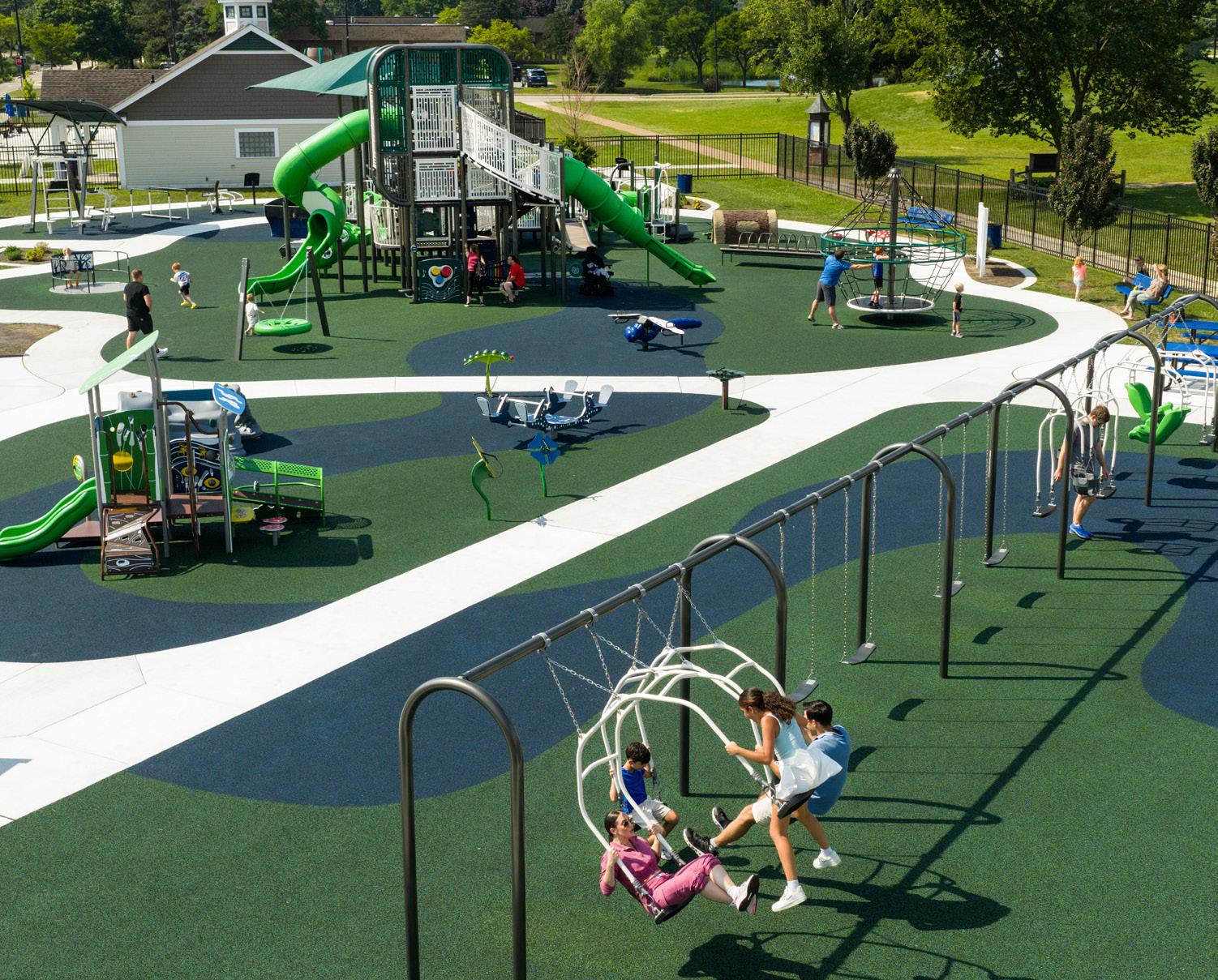
Forward-thinking communities are responding with strategic design choices... that encourage shared participation across generations.
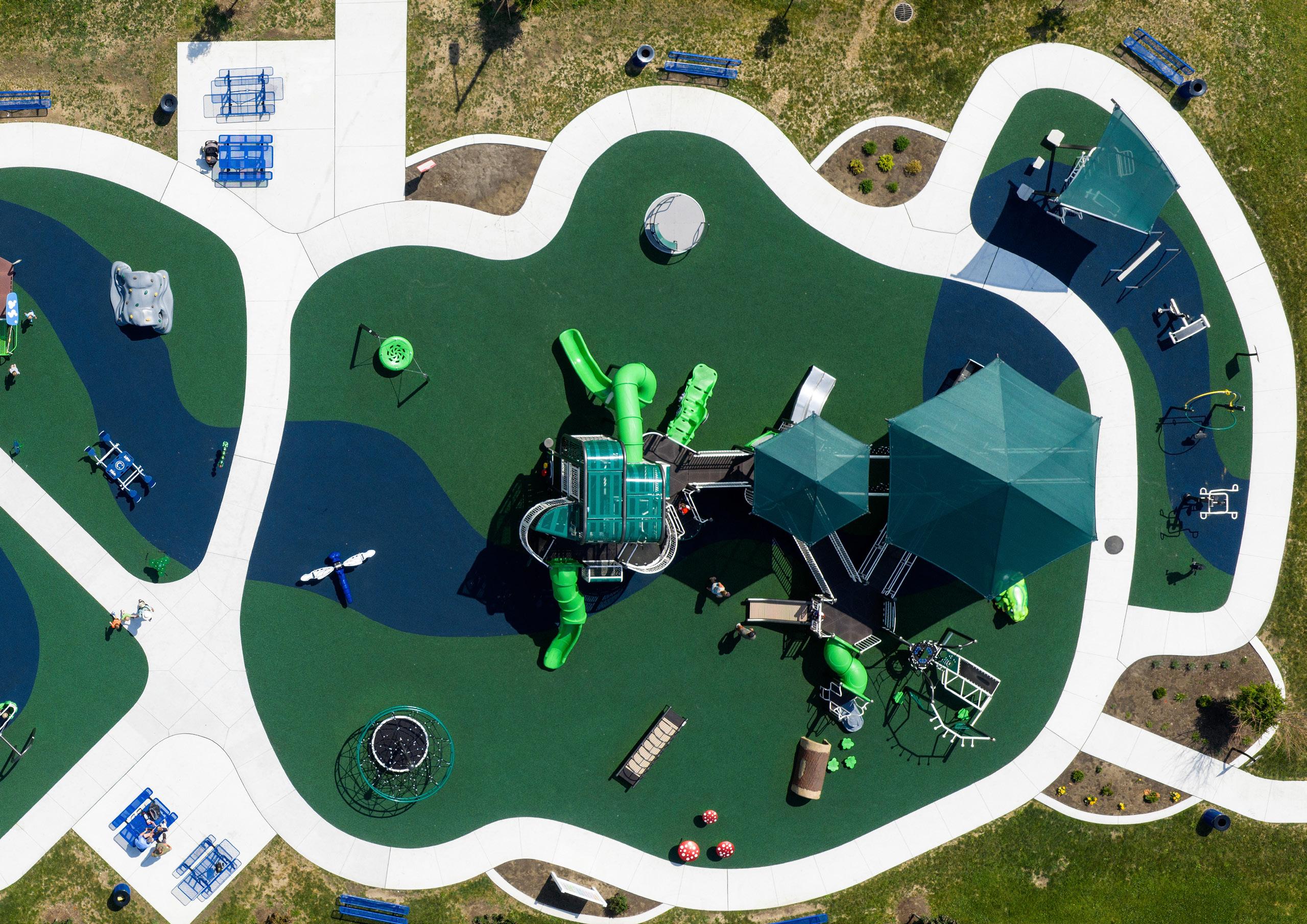
Here's where the data gets even more powerful. Numbers unlock money.
When cities apply for grants—whether from the federal Land and Water Conservation Fund, state programs, or philanthropic foundations—they're often asked: What need does this project serve? How will you measure success?
With data in hand, the answer is easier to provide.
Consider a small town that tracks daily usage of a local trail and notices a 30% spike over the past year. That stat becomes a cornerstone of their grant proposal for expanding the path. Or imagine a mid-size city that overlays park usage with health statistics and identifies a neighborhood with high obesity rates and low park access. Now, they have a compelling equity narrative to drive funding—and a solid plan for change.
Even large metros are seeing results. Los Angeles County's massive Park Needs Assessment used GIS mapping,
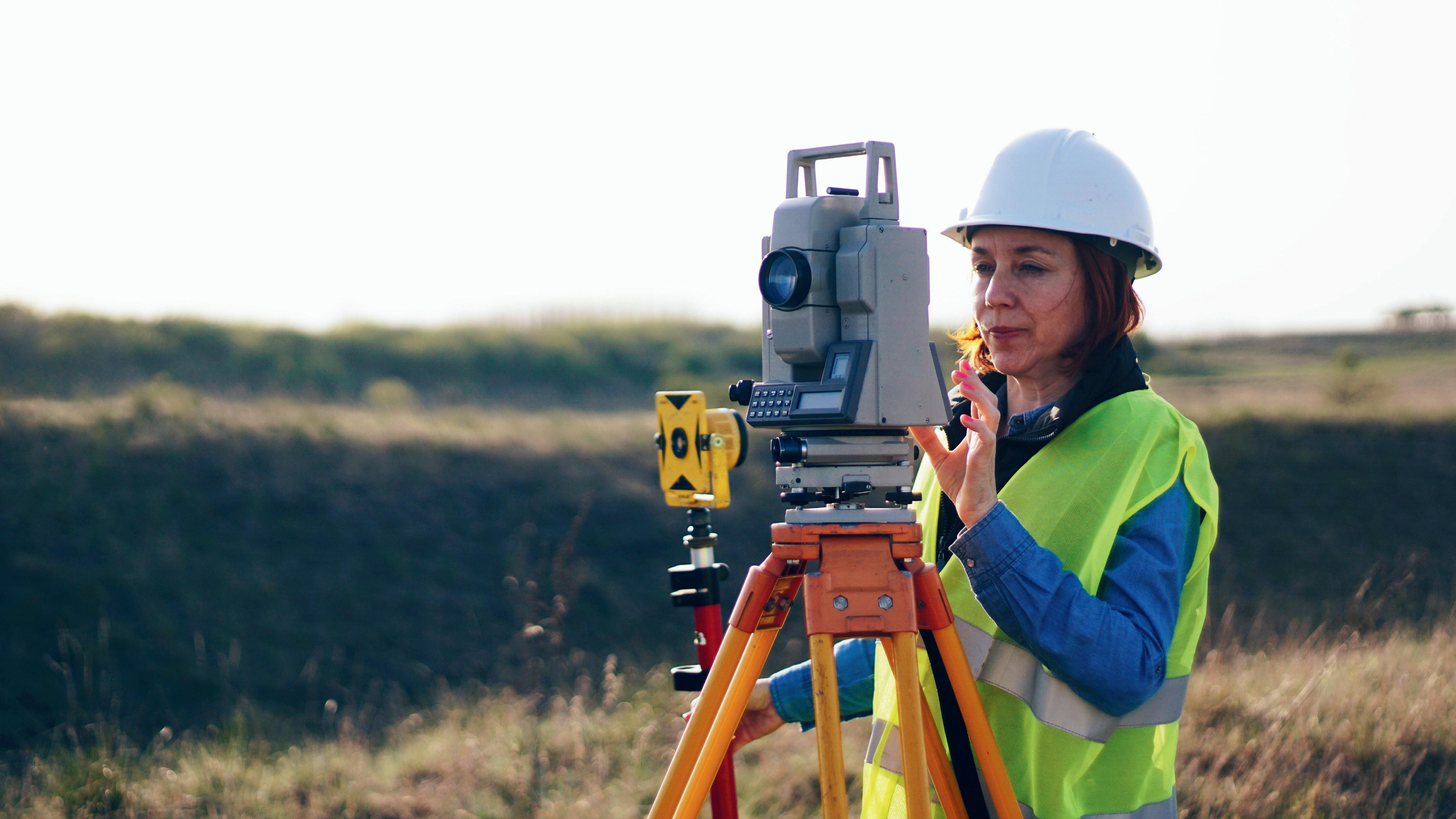
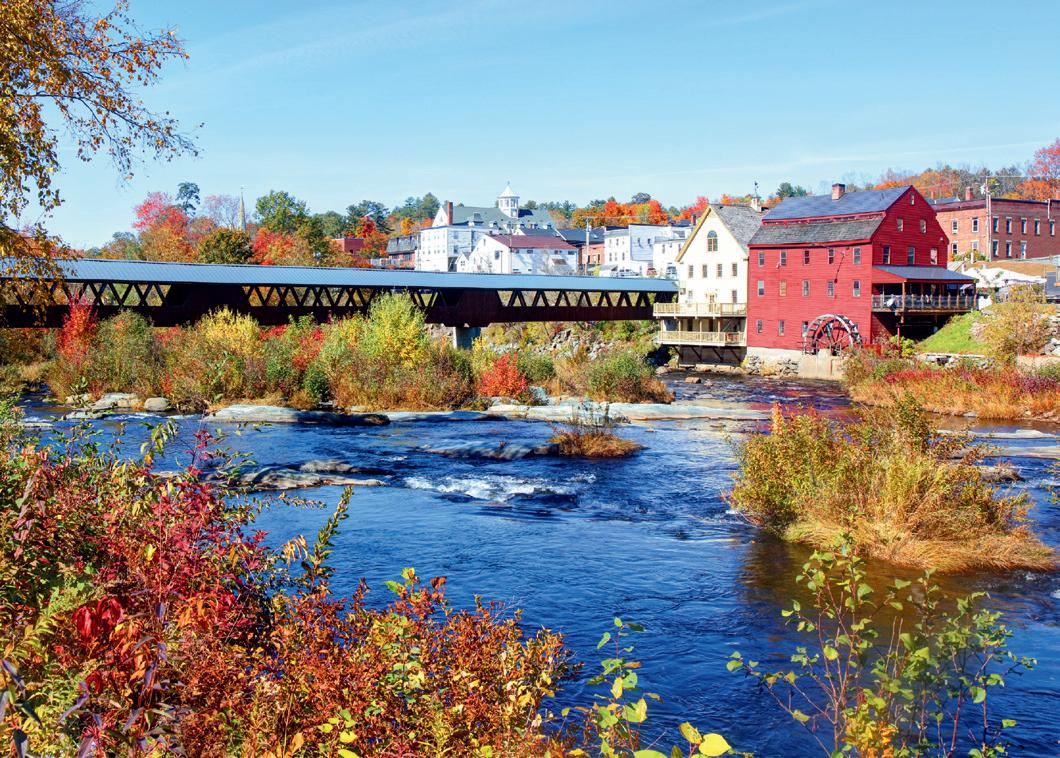
Whether you're a village with two parks or a city with two hundred, data scales.
In small towns, data might come from volunteers doing weekly headcounts or tracking program attendance. Littleton, New Hampshire (population 6,000), used such grassroots data to secure a $200,000 federal grant by demonstrating local need and enthusiasm.



Mid-size cities like Pittsburgh and Minneapolis have utilized equity scoring systems—combining park condition reports with demographic data—to inform capital improvements where they're most needed.
Large metros like New York and Las Vegas are going all-in on smart park systems, with IoT sensors that track usage, monitor lighting, and even detect maintenance issues in real-time.
Regardless of size, the trend is the same: communities that collect and act on data build better parks—and better connections between people.
We're entering an era where parks are no longer just "nice places to go." They're vital infrastructure—like roads and schools— essential to public health and community wellbeing. And just like any public asset, they deserve to be measured, funded, and improved with intention.
Data tells us who's being served and who's being left out. It shows us what works, what doesn't, and what needs a second look. It's the difference between guessing and knowing— and between hoping a project will succeed and proving that it did.
If you want to build a park that matters, a space that supports intergenerational recreation, and a place that engages every member of your community, start with the numbers. Then, let the numbers lead you somewhere extraordinary.
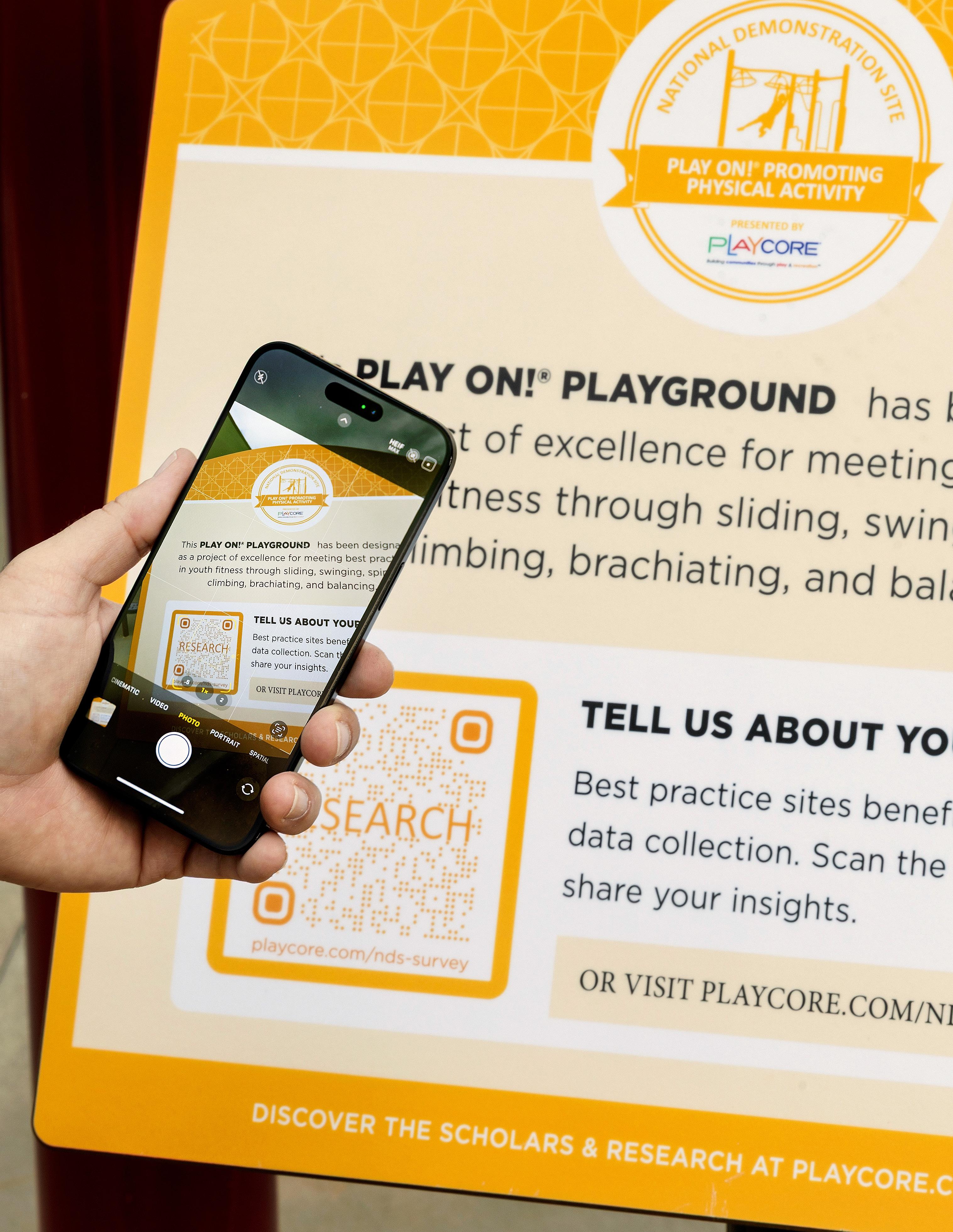
This is more than a sign — it’s part of a national movement! When you see this sign in a park or playground, it's a signal that the space was designed using the latest research and best practices. As part of PlayCore’s National Demonstration Site network, it’s helping communities understand how recreation shapes lives.
You’ll see a QR code at the bottom. Scan it. Answer a few simple questions: How long did you stay? What did you do? Who were you with? That’s it. Your answers become part of something bigger — a growing picture of how this space brings people together, boosts quality of life, and builds community vitality. It’s a small action with a big impact, and it contributes to the community data you need to unlock funding, report outcomes, and so much more.
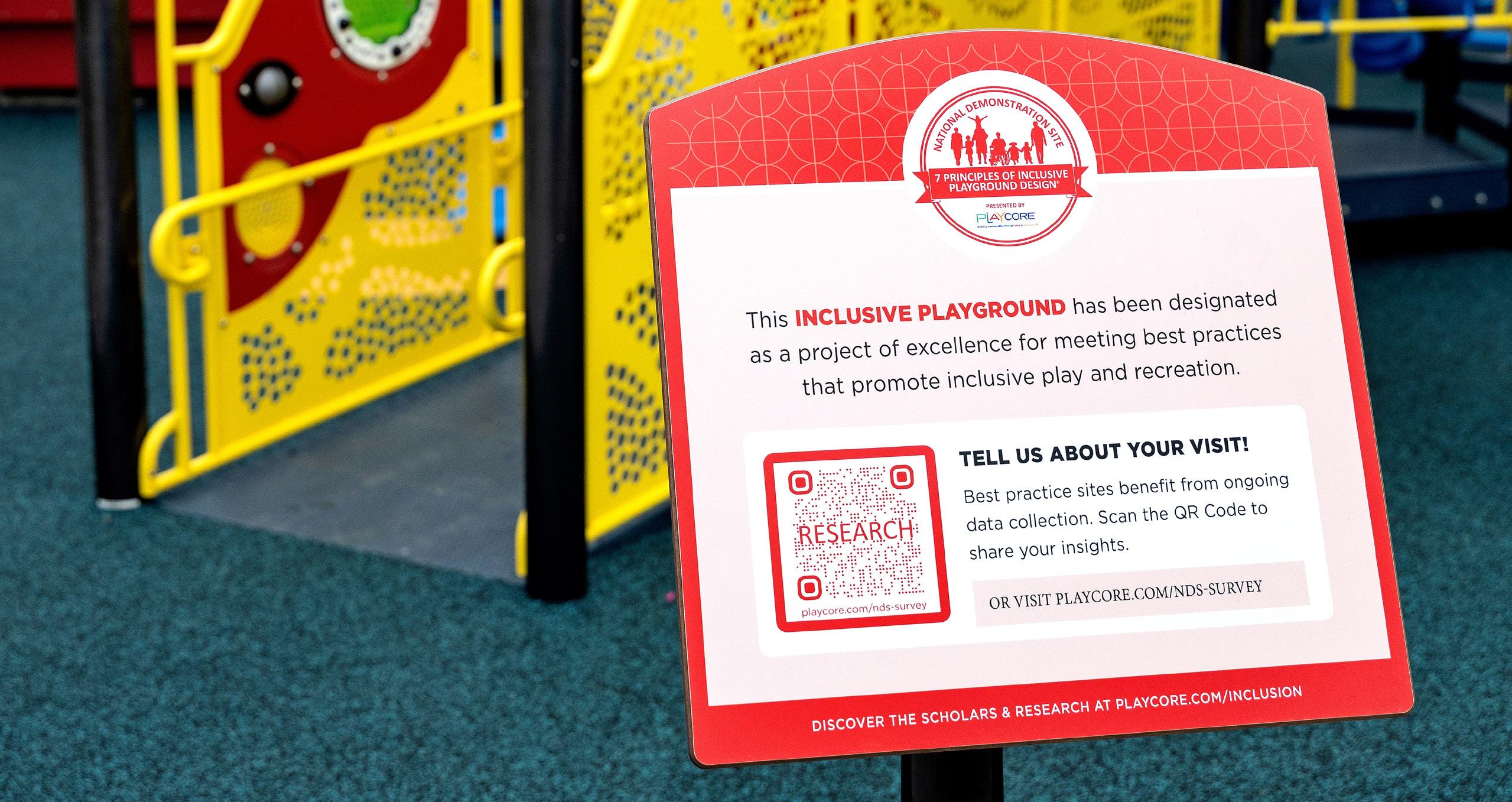
Intergenerational connections thrive on finding common ground – and there's no better place to start than by protecting and appreciating our shared environment.
Sustainability is at the heart of everything we do through our "Green by Design" philosophy. As the first commercial playground manufacturer to join the U.S. Green Building Council (USGBC), we integrate Leadership in Energy and Environmental Design (LEED) principles into our daily operations, ensuring we contribute to a “greener” future, starting with recycling.
A fundamental goal of sustainability efforts is to reduce waste. From steel to plastic, we include as much pre-consumer and post-consumer recycled content in our products as possible. The more recycled content we use, the more we help keep existing materials in a continuous cycle of use and reuse.
In addition to using materials with recycled content, we make every effort to minimize waste throughout our manufacturing process. Today, 100% of scrap materials such as metal, plastic, and paper are recycled - from production lines to administrative operations.
Recycling begins with choosing the right materials. By avoiding overconsumption and embracing conservation, we ensure that only what’s truly needed enters the recycling stream.
Conservation isn’t just a goal – it’s a mindset. We’re intentional about the footprint we leave, using only what we need and striving to minimize our impact on the environment.
To improve our conservation efforts, we collaborate with our suppliers to source environmentally preferable materials. We



Before reaching out to landscapers for demolition services, consider integrating the living landscape into your outdoor space. Whether it’s nature trails or innovative playgrounds, weaving the natural environment into your design creates a distinctive and memorable space that all generations can enjoy.
Research shows that when children play in environments that blend nature with built elements, they experience higher levels of physical activity, engage in more social interactions, and derive greater play value from the space.
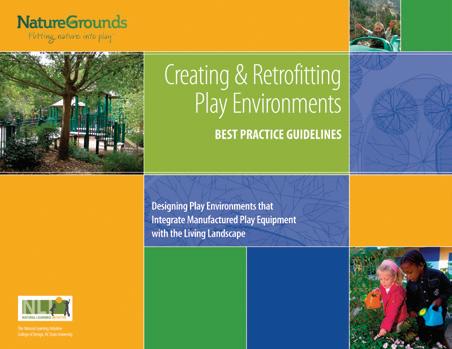
In partnership with the Natural Learning Initiative, PlayCore created NatureGrounds, a set of best practice guidelines for designing or retrofitting natural playgrounds. These spaces integrate manufactured play equipment with the living landscape to create a unique outdoor experience. Both children and adults can explore native plants and local ecology together, sparking curiosity and fostering a deeper connection with the natural world.
Although trails are prevalent across the nation, few children and families are actively using them. New research shows that integrating play experiences along shared-use paths can significantly increase the frequency and duration of use by families.1
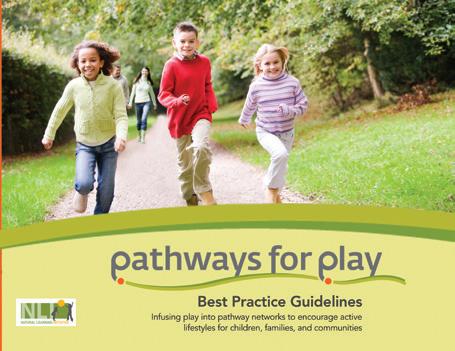
Our parent company, PlayCore, in partnership with American Trails, the Rails-to-Trails Conservancy, and the Natural Learning Initiative at NC State University’s College of Design, developed Pathways for Play. This guidebook helps communities identify ideal locations for pathways and offers strategies for incorporating "play pockets," or engaging features along the trail where families can explore and play together.
People who are exposed to nature and have experiences in nature are more likely to act responsibly toward it.
NATIONAL RECREATION AND PARK ASSOCIATION
Park and Recreation
Sustainaibility Practices

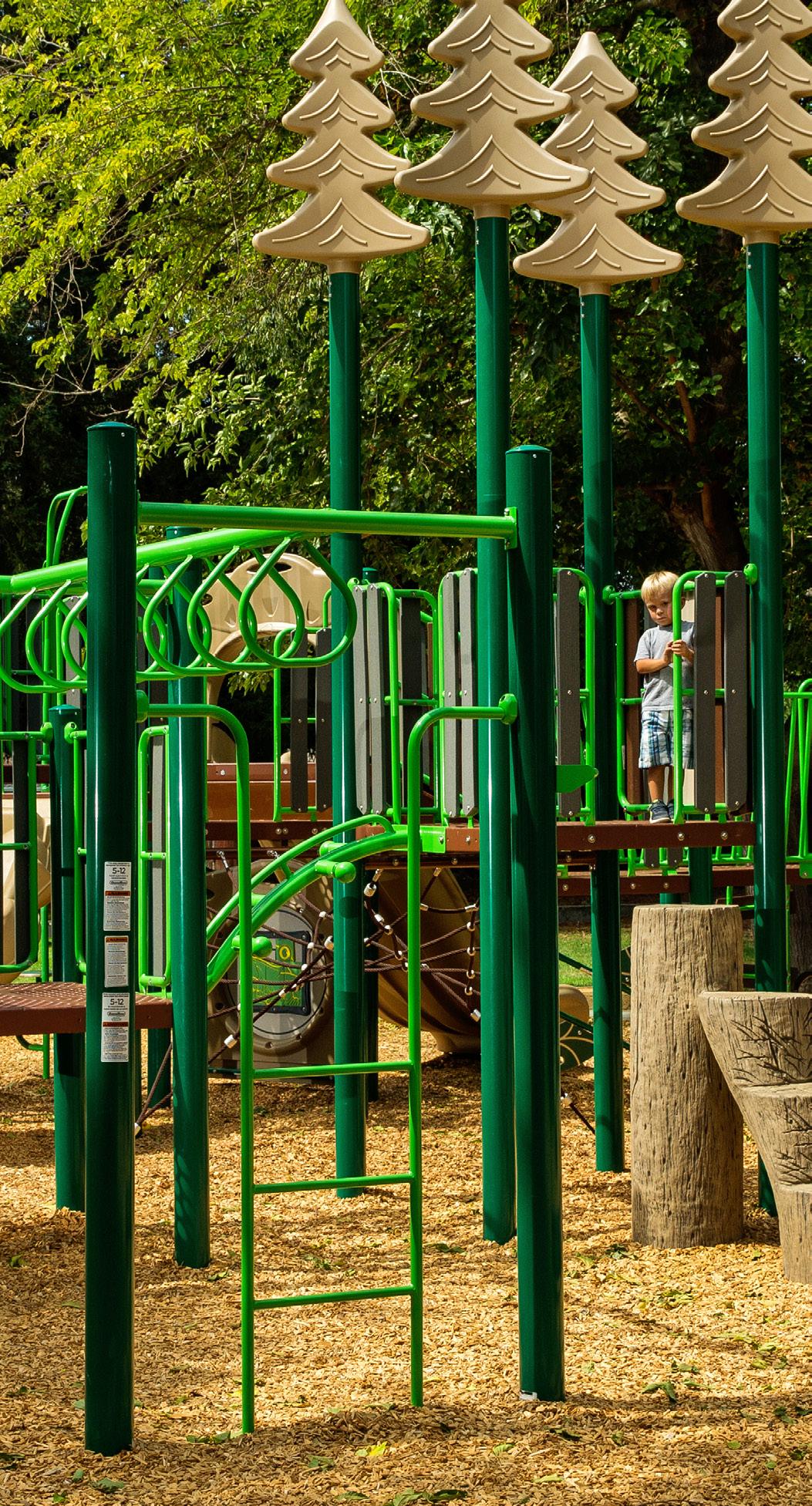
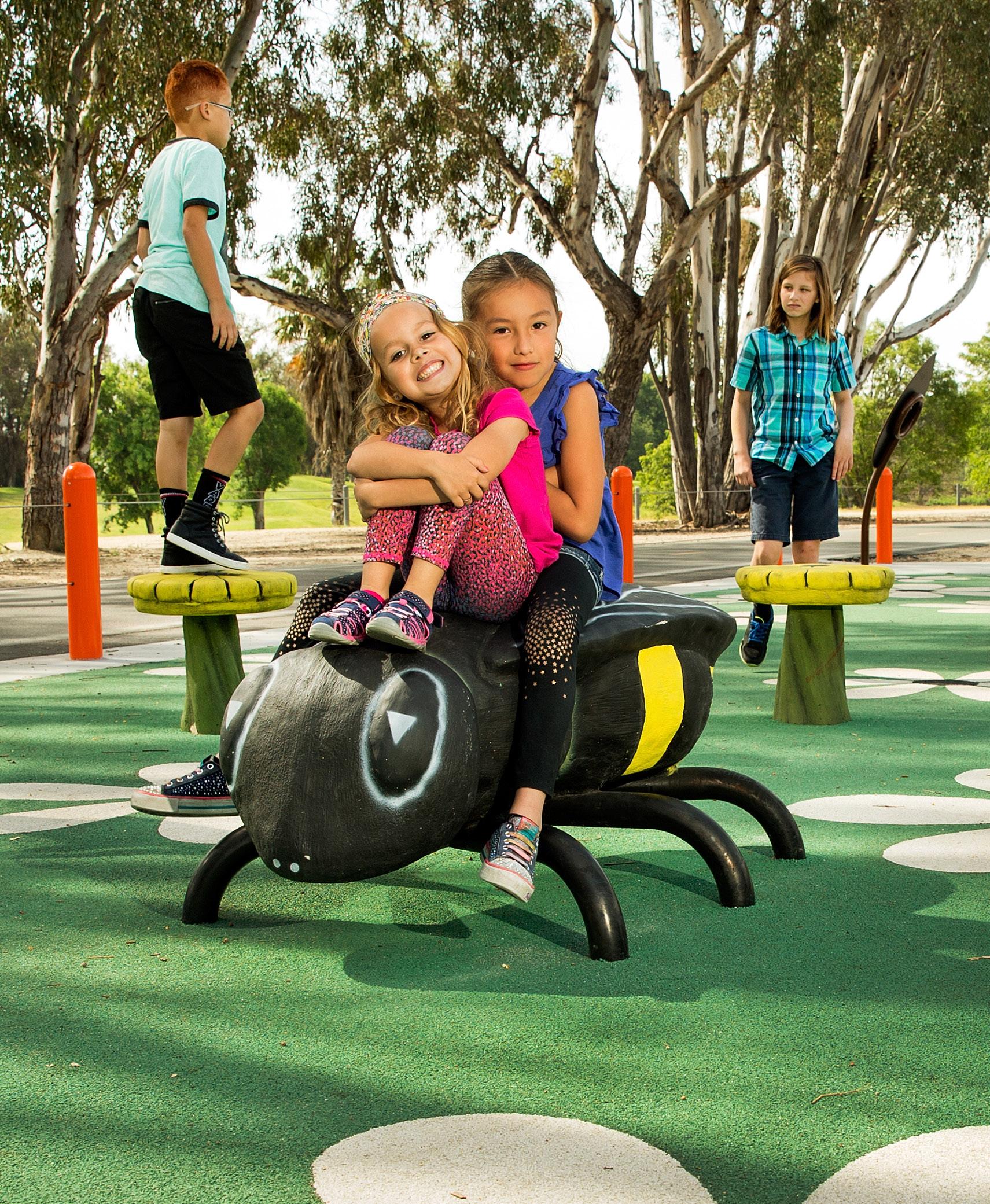
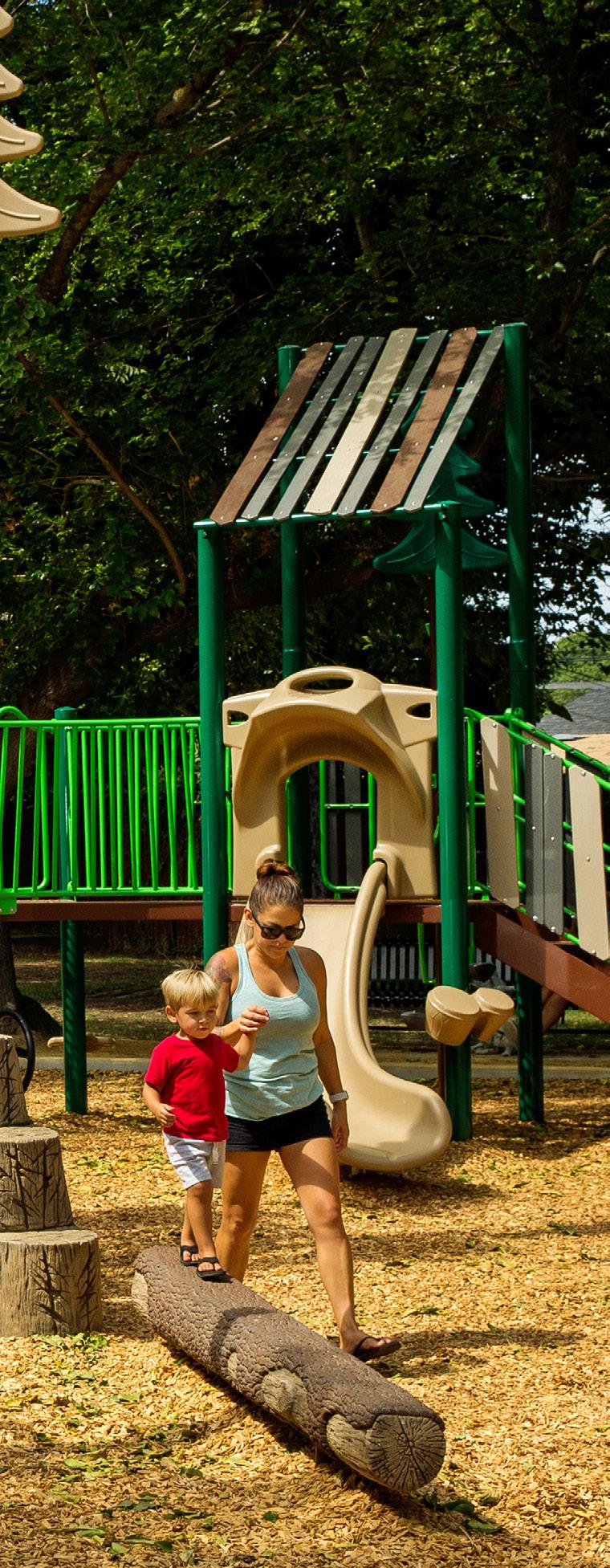
100% of our manufacturing process waste* is recycled
*scrap metal, rotationally molded plastic, and paper
also prioritize working with local partners to help reduce our carbon footprint. Through high-efficiency systems for product painting and washing, we’re even able to minimize water usage.
Our commitment to conservation goes beyond materials - it includes energy, too. Every kilowatt-hour saved reduces greenhouse gas emissions, which is why we continuously invest in energy-efficient processes across our operations to lessen our environmental impact.
By using only what we need and recycling responsibly, we’re able to create sustainable playful destinations for all ages.
For nearly a century, we’ve been creating products that prioritize responsible materials, sustainable manufacturing practices, and end-of-life reclamation. With over 125,000 individual parts moving through our 400,000 square-foot facility, even the smallest steps towards greater environmental efficiency can help us make a very big difference.
We want today’s children to, one day, bring their grandchildren to the same parks they grew up with. That’s why we build durable products backed by industry-leading warranties – offering peace of mind that your investment will last for decades, not just years.
To ensure long-lasting performance, we carefully select materials that minimize environmental impact while maximizing durability, built to withstand generations of play.
Our playgrounds aren’t the only thing built to last – we are, too. GameTime has been enriching childhood through play since 1929, offering nearly a century of fun you can rely on! With long-standing partnerships with local distribution experts, you'll always have a trusted partner nearby, invested in your project and community for the long term.
The sustainability choices we make today shape the world future generations will inherit. By exploring trails and integrating nature into play spaces, people of all ages can connect, play together, and discover the wonders of the natural world.
For years, the benefits of outdoor play have primarily centered around exercise and fresh air. Parks, however, offer far more than just a space for physical activity - they create opportunities for mentorship.
These shared environments naturally foster connection, encouraging intergenerational relationships that help children grow into the best version of themselves. In fact, 74% of successful adults say they were mentored as children, highlighting a direct link between early mentorship and long-term success.1
A bright future starts with a strong foundation, built on self-confidence and meaningful relationships. These are the building blocks that help children grow into capable, connected adults, ready to thrive in the world.
Mentored youth are more likely to develop strong self-esteem and a sense of belonging.2 Research shows that mentored children often develop stronger communication and interpersonal skills, leading to healthier, more meaningful relationships with peers, parents, and other important people in their lives.3
Mentoring empowers children to make better life choices. Research shows that children with mentors are 46% less likely to engage in risky behaviors, due to the development of stronger decision-making skills.4 Mentored children also exhibit lower rates of substance abuse, delinquency, and violence.5



Studies show children with mentors are 2.5 times more likely to feel confident in school and 52% less likely to skip class.
Not only are mentored children making better choices today - they’re also invested in their future. Studies show children with mentors are 2.5 times more likely to feel confident in school and 52% less likely to skip class.6 These factors lead to higher academic achievement, lower dropout rates, and a greater likelihood of pursuing higher education.
Parks and recreational environments are ideal for fostering mentorship. Something as simple as picnic tables under a shelter can become a space for connection, whether it's helping with homework, sharing a meal, or just talking.
Sports offer another powerful bridge between generations. Basketball courts for example, create instant common ground – most people know how to play, even if they don’t know all the rules, making it a natural place for conversation and teamwork.
Walking paths can also encourage intergenerational exchange. With shaded benches placed along the way, people of all ages have the chance to pause, rest, and connect - making room for meaningful conversations.
Mentorship begins with adults who are willing to give their time and serve as positive examples for the youth in their community. The Carolina Panthers embody this commitment through their Play 60 initiative, which encourages children to get at least 60 minutes of physical activity each day. As part of this mission, the Panthers helped fund Challenge Courses at several Charlotte-Mecklenburg schools, including Landsdowne Elementary, River Oaks Academy, and Steele Creek Elementary.
To show their commitment to North Carolina’s youth, the Panthers didn’t just offer support - they showed up. Team members attended ribbon cuttings at each school, sending a powerful message: getting active isn’t just important - it’s fun! As Riley Fields, Director of Community Relations for the Carolina Panthers, shared:
“These new playgrounds are going to serve thousands of children and provide new and exciting opportunities for active play, while encouraging kids to get 60 minutes of daily physical activity, which is one of the key elements of the NFL's Play 60 program.”
The impact of positive role models can last a lifetime. The Panthers’ support provided more than just a place to play - it gave the kids a reason to believe in themselves.
While parks and recreation spaces are fun and exciting, their greatest value lies in the lasting connections they create. These shared environments become places where generations grow together and form meaningful relationships.
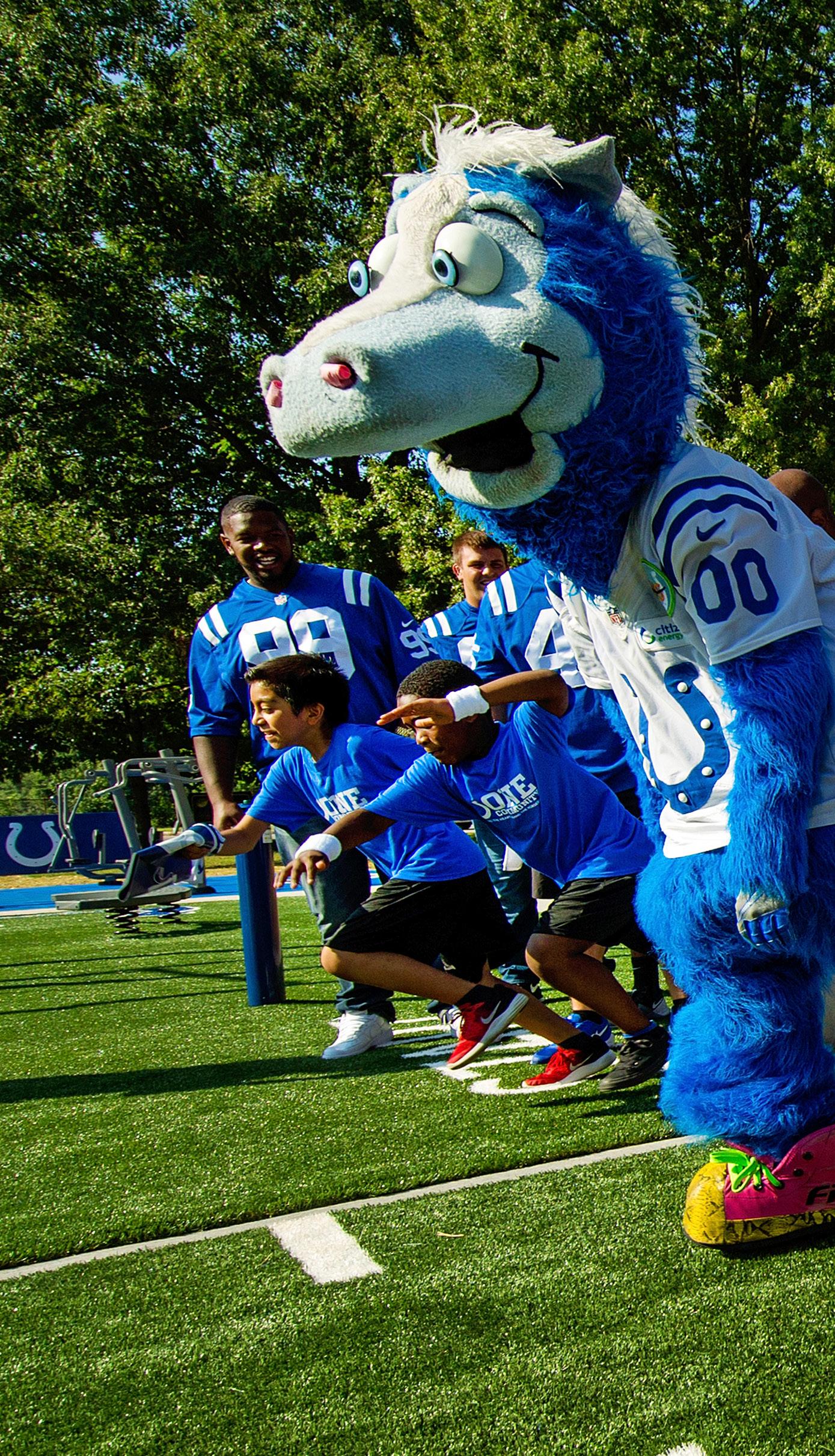
74% of successful adults say they were mentored as children
Mentoring doesn’t flow just one way. Every generation has something to offer - whether it’s wisdom from experience or a fresh perspective from the youth. Parks provide common ground, speaking a universal language of play that everyone understands.
Through intergenerational parks and playgrounds, we can begin to shape the future. By designing inclusive, engaging spaces that foster mentorship and connection, we help build stronger, more resilient communitiesone generation at a time.

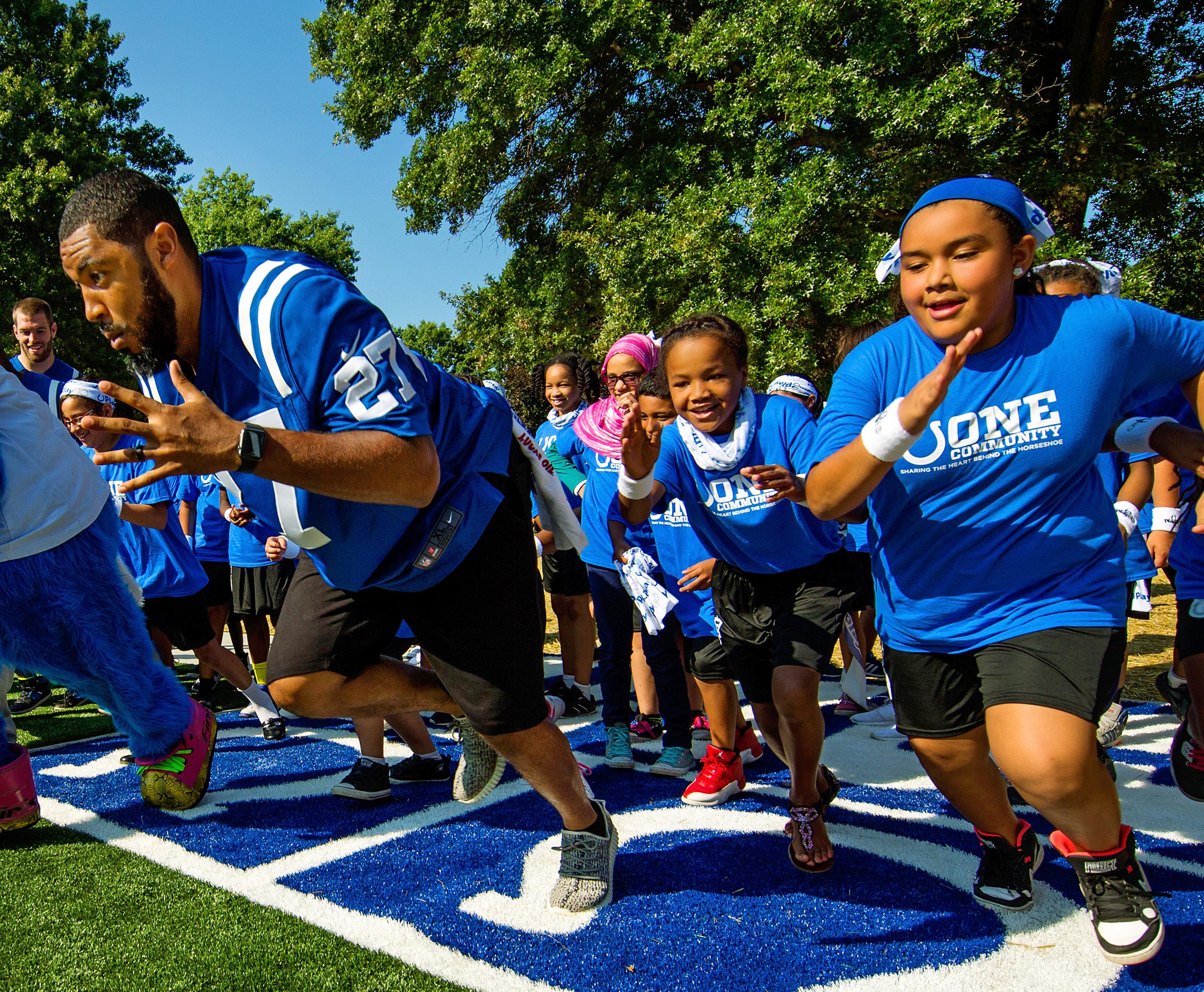

Ten years ago, we changed the way the world sees the playground swing—and each other. Expression Swing®—the original, patented, face-to-face swing—invited parents to stop pushing and start playing together. For the first time, they could see their child’s face light up midswing. That moment is everything. Rooted in the science of attunement, Expression Swing deepens connection through shared joy—and those connections last long after you leave the playground.
Today, Expression Swing is more than a parent-child experience. It’s a tool for mentors, caregivers, and youth leaders to build trust, spark laughter, and create moments that matter. Because play today shapes the adults we become tomorrow.
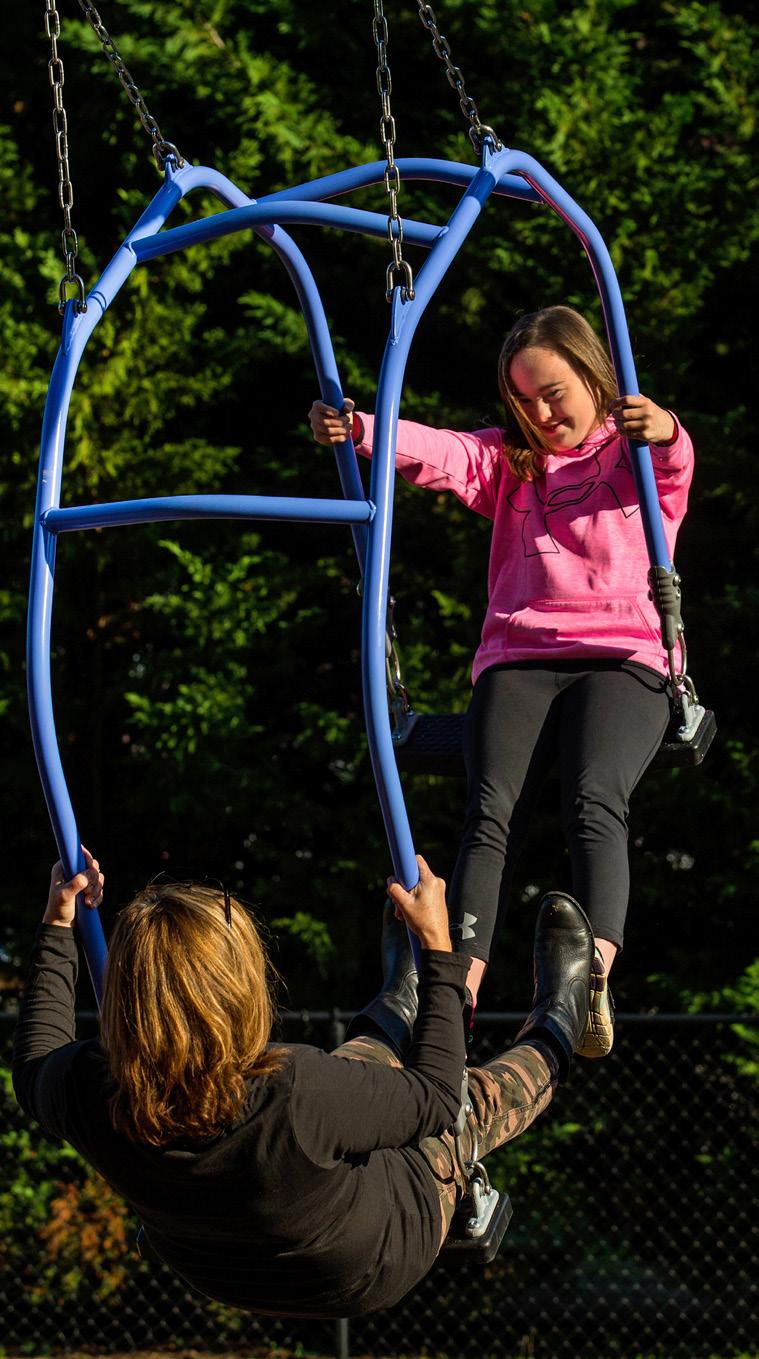
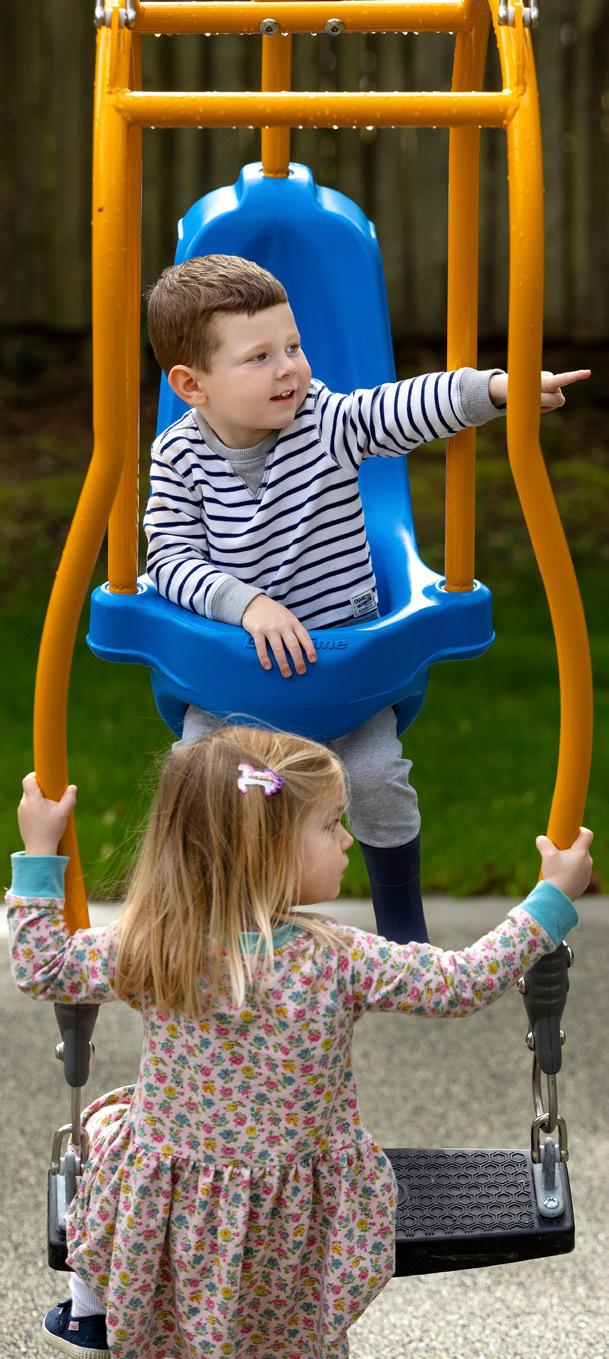
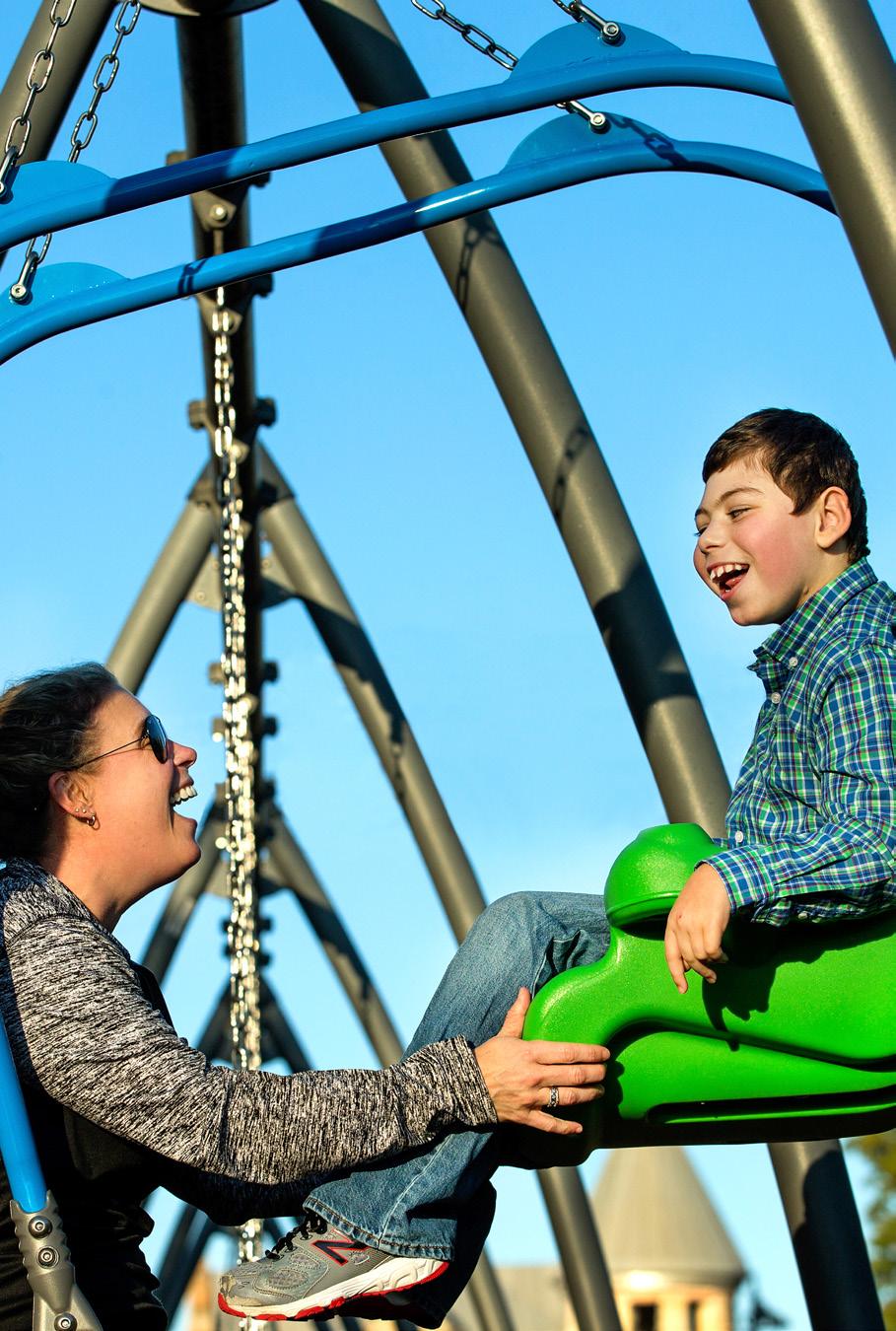
These products were designed to promote intergenerational recreation and encourage people of all ages to engage in fun activities together. When you include these products in your park or playground, you unlock the full potential and help children and adults realize unmatched social, physical, and cognitive benefits.
Product Name & Description
Promote inclusion with the Arch Swing! This swing features a saucer-style seat, allowing children who are unable to sit upright to lie across the center section and enjoy the to-and-fro motion alone or with friends.
The Aurora features three colorful spinning bowls atop a tilted turntable, offering excitement for both children and their caregivers alike.
Experience the Aventus Tower, the industry’s first accessible playground tower. Personalize this playground centerpiece with climbers, slides, and sensory activities to create a one-of-a-kind play experience for all.
The Basketball Wall is an innovative take on the classic basketball hoop. The multiple hoops encourage collaborative play, and the fun, organic shape feels at home in any outdoor environment.
From children to older teens and adults, the Challenge Course obstacle course offers fun and engaging experiences the whole family can enjoy together.
A GameTime and Boardmaker collaborative, the Communication Sign allows users to identify the area or activity they want to experience, or describe how they are feeling to their peers.
Promote intergenerational connections with the Expression Swing! This GameTime exclusive allows adults and children to swing together and experience one another’s facial expressions while at play.
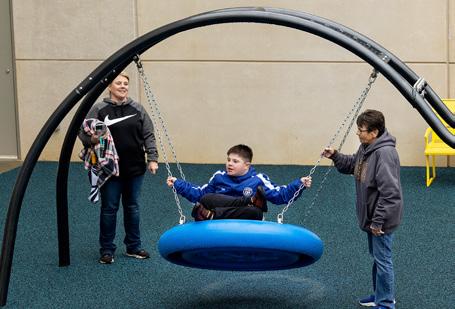
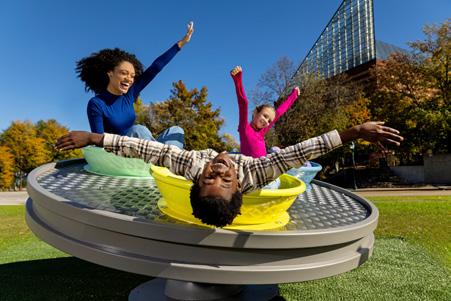
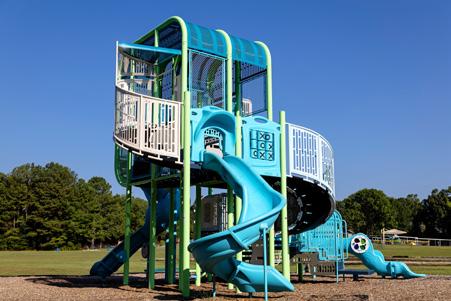
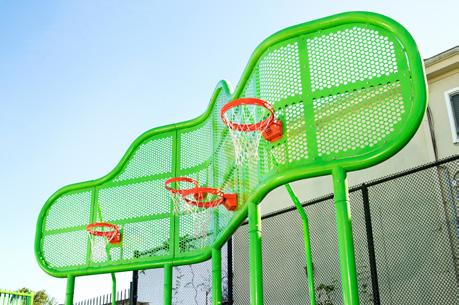
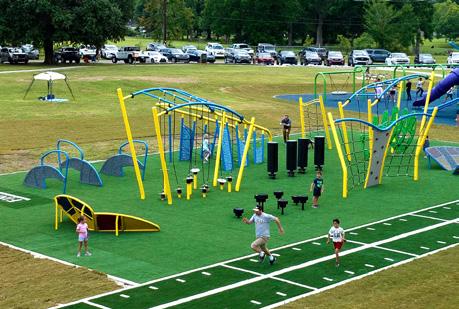

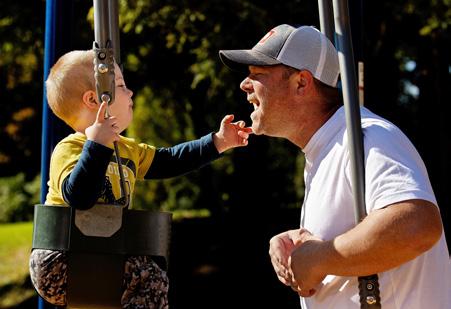
Choose from our TuffCrete and PolyShield options to add realistic-looking logs and mushrooms, playful critters, and much more! Check out our standard products or ask your local play expert about our custom designs!
The Fusion provides a comfortable seating area and an exciting spinning sensation. It’s inclusive, accessible design can be used in a variety of ways, allowing children to define their own play experience.
Music is an inherently inclusive activity that encourages social and creative play. Our GT Symphony™ collection of precision-tuned musical instruments is designed for children and adults of all abilities.
GT Wave™ is the industry’s first net climber with a transfer platform attached to an accessible route leading to a six-foot zip slide. Children of all abilities experience a wide range of play adventures, as well as physical, social-emotional, and cognitive skill development.
GTfit outdoor gym equipment was designed to incorporate all the elements of a well-rounded fitness routine into outdoor fitness stations for users of all abilities and fitness levels. There are three series of GTfit outdoor workout equipment to help you build the best outdoor gym for your community.
Sliding down hills is a fun activity that dates back generations before commercial playgrounds. Our Hillside Wave Zip Slide can be installed on a natural or landscaped embankment to create an exciting hill slide right on the playground.
The Inclusive Whirl provides ease of access for people of all abilities with its ground-level, zero-entry design. It features seating, a large platform surface that exceeds the ADA requirements, and handrails for users to grasp while spinning.
Classic styles, old-world charm, and modern designs are all part of our StreetScape® line. Choose from our wide collection of benches, seats, litter receptacles, and tables to create the perfect place for rest and relaxation.
Playful Landscapes Mesas and Dunes are preconfigured hills you assemble on site. Their patent-pending design make it easy to add one or more hills for children to climb and explore.
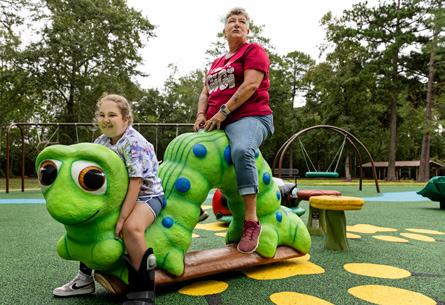
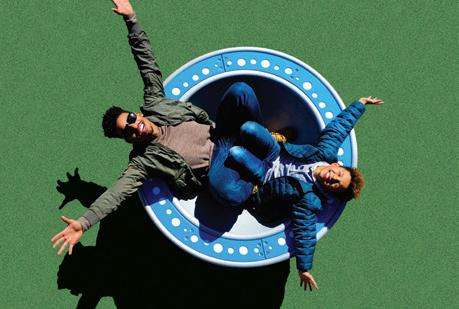
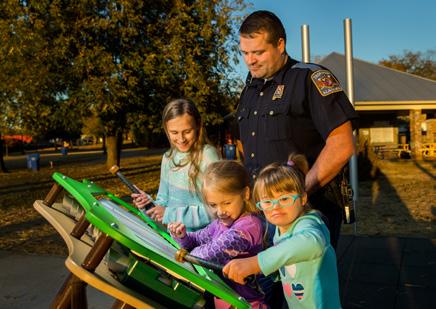
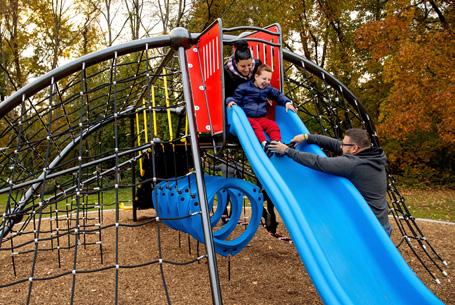
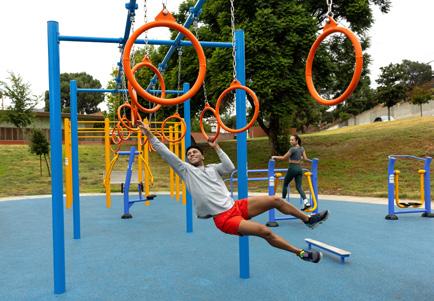
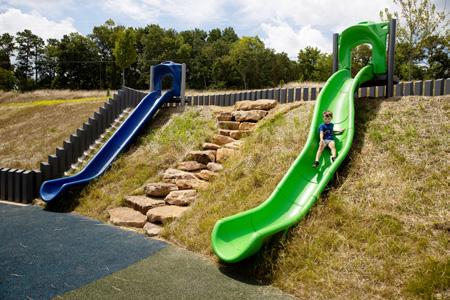
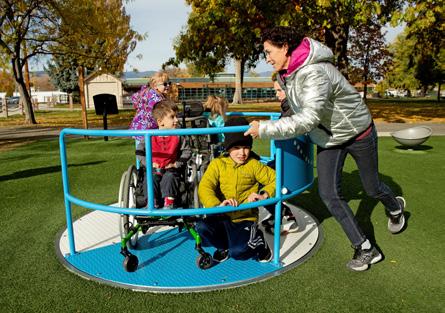
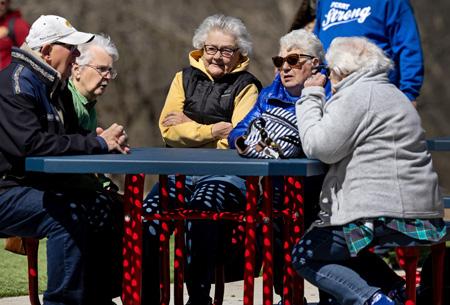

Children of all abilities imagine exploring the open seas and foster friendships with our inclusive Rock N Raft. There is seating for six, as well as room for a person using a mobility device to fit comfortably. Passengers cooperatively shift their weight or push the outside to achieve momentum.
With high backs and side rails, each of the four seats on this innovative see-saw are designed to accommodate users of all abitilies as they enjoy the rocking motion with their friends.
The Sensory Wave Climber™ is the industry’s first playground climber that allows children of all abilities to enjoy the benefits of climbing while enhancing sensory development. Strategically placed molded-in grips, hand holds, and transfer area provide additional support for children of all abilities.
Our shade products block up to 97% of the sun’s harmful UV rays, providing protection for both playground equipment and the people who use it. Our shade also cools the covered area by up to 25º (14ºC), making it more enjoyable for children and families.
With Salora shelters, you can create stylish and inviting spaces for family gatherings or community events. Each shelter is crafted for comfort and protection and helps foster connections while shielding visitors from the elements.
The Surfboard is designed at wheelchair transfer height so those using a mobility device can easily move onto the Surfboard and start to play! The upturned arms allow users who require extra postural support to sit or lie supported on the surface.
Take a break from the standard bench to enjoy a leisurely swing with the Sway Bench. The 12-gauge punched steel swing seat is supported by 3.5” diameter posts to provide a gentle swinging motion.
With a small footprint, low cost of entry, and a wide range of exercise options, THRIVE removes barriers to high-quality functional fitness and creates connections between people of all social backgrounds throughout the community.
THRIVE Studio combines a fitness wall with an open training space for an all-in-one outdoor gym. In about 1,300 square feet, you can provide 15 exercise stations for up to 30 users.

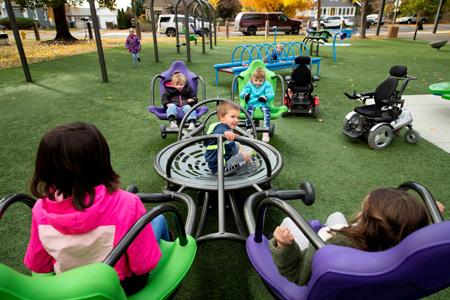
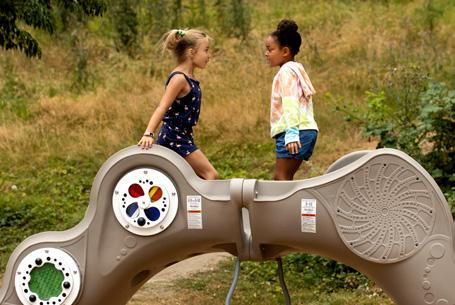

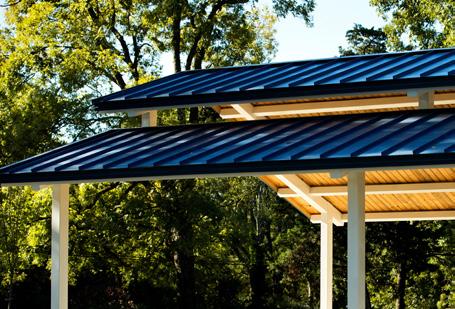
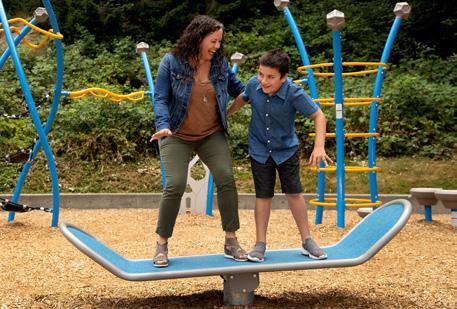
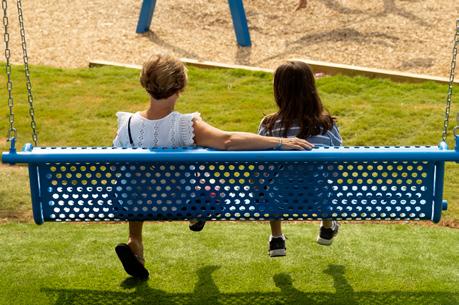

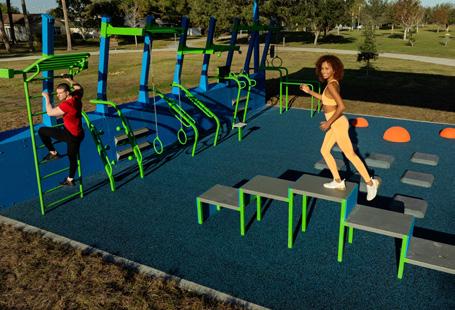
The Tri Runner features three soft touch molded seats attached to durable ComfortGrip™ ropes. As users spin around, the panels disperse fun shadows on the ground below.
VistaRope® is GameTime’s collection of rope-based play activities for parks and playgrounds. Our freestanding net climbers and play system components give children an exciting way to stay active and explore a playground.
The SkyRun Zip Track offers a fun and exciting motion play activity that feels like flying through the air. The Zero-G seat promotes inclusivity and allows children who need additional support to join in on the fun.
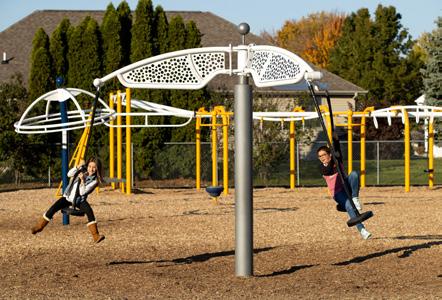
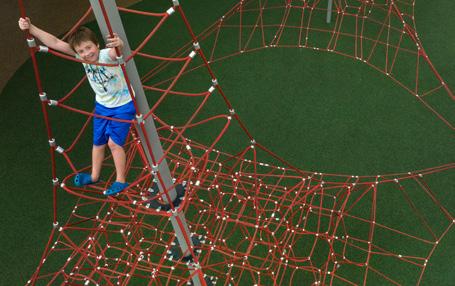
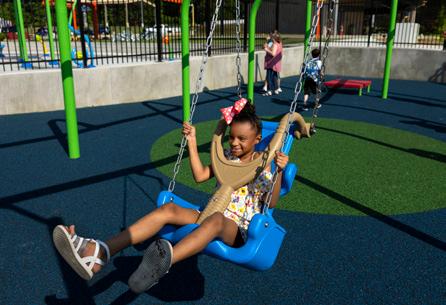

Learn more about the power of intergenerational play, and view all of our products designed to encourage people of all ages and abilities to play together at gametime.com/play-together
